Enjoy
*** FREE SHIPPING ***
(USPS Ground Advantage - U.S. only)
I'll Stop Wearing Black When - A Short History of the Non-Color Black
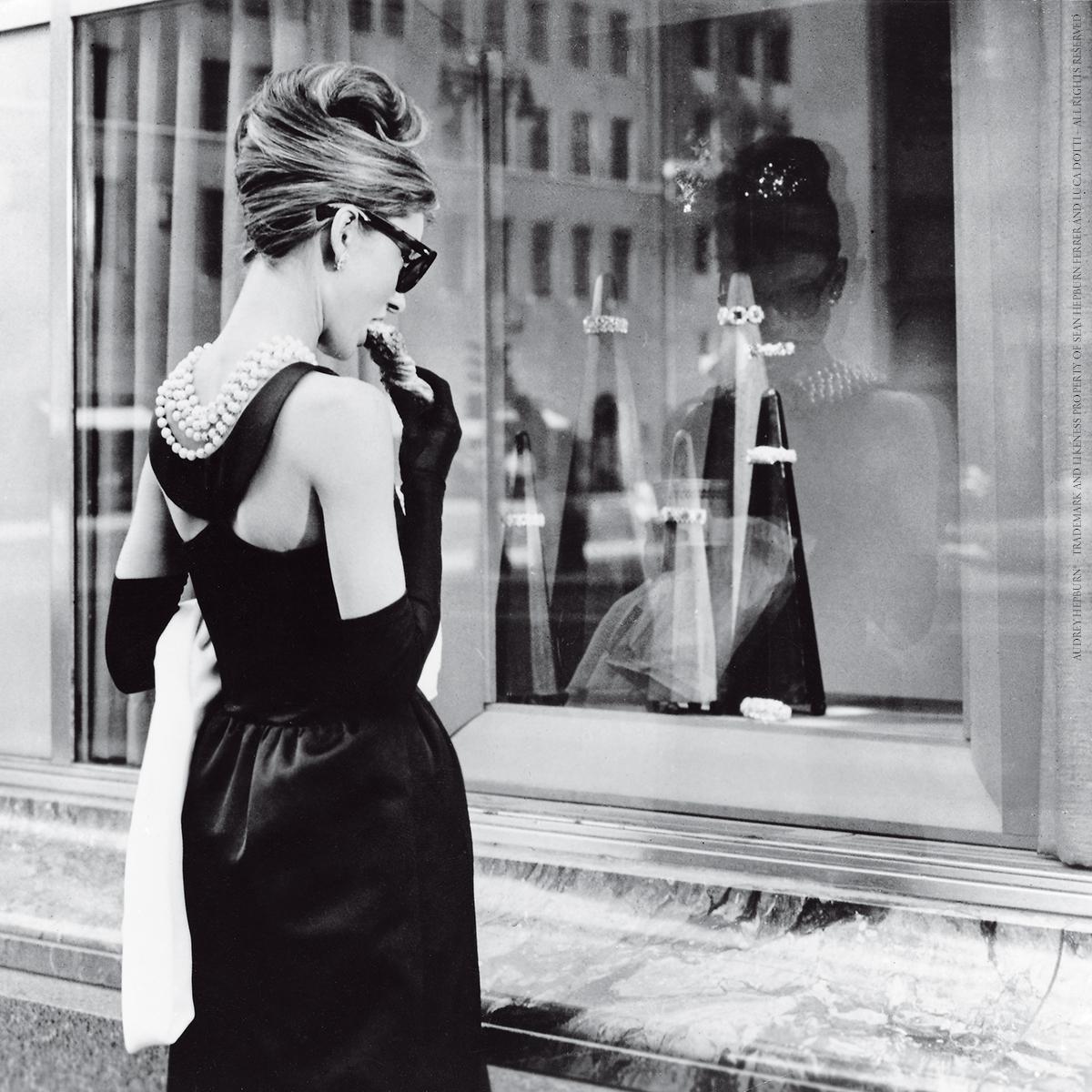
I’ll stop wearing black when they invent a darker color - Wednesday Addams
Writing about the history of black is probably a bit strange here in the middle of spring with flowers blooming up a storm in all sorts of beautifully varied and cheerful colors. But just like Wednesday Addams of the Addams Family fame, black has always been a color (or non-color as it turns out) that I enjoy wearing. Black has a very long and rich history, something I found most fascinating. I kept reading and reading and reading some more: interesting information and tidbits about black, both the elegant side and the more “evil” connotations. So, I decided to share some of the information. And also highlight unique handmade items from artist friends that feature black prominently in the design. Other photos of interest about black are also scattered in. All photos are linked.
Vantablack is made of carbon nanotubes and is the blackest substance known, absorbing a maximum of 99.965% of radiation in the visible spectrum. Photo courtesy of Surrey NanoSystems
In the visible spectrum, black is the darkest “color”, an actual absence of color since no visible light reaches the eye. It is the opposite of white where all colors are reflected back to the eye. It is achromatic, literally a color without a hue, a “non-color”. It is one of the four colors, along with cyan, magenta and yellow, used in color printing to produce all other colors. According to surveys in Europe and North America, it is the color most commonly associated with death, mourning, the underworld and evil. On the opposite extreme, black also represents elegance, formality, authority and power.
Etched Black Lampwork Glass Beads with Fine Silver Handmade by Charlotte of Covergirlbeads
The modern word for black was originally drawn from the Proto-Indo-European word bleg (burn). Old High German (spoken from around 750 to about 1050) had two words for black: swartz for dull black and blach for a luminous black. Middle English (from about 1150 to around 1450) also developed two words for black based on the German: swart for dull black and blaek for rich, shiny black. Swart still survives as the word swarthy, while blaek became the modern English black.
Black was one of the first colors used by artists in cave paintings. The famous Lascaux Cave in France contains drawings of bulls, horses, red deer, stags, other animals and mythical creatures drawn by Upper Paleolithic artists between approximately 15,000 and 17,300 years ago. They began by using charcoal, but then made more vivid black pigments by burning bones or grinding a powder of manganese oxide.
"Great Black Bull" - Upper Paleolithic painting of a bull or auroch using manganese black in the Lascaux Cave, estimated about 17,000 years old; photo by N. Aujoulat
Black had a very positive association for ancient Egyptians since it was the color of the rich black soil caused by the flooding of the Nile River. It also was the color of Anubis, the god of the underworld who was often portrayed as a black jackal. He was bleived to offer protection against evil to the dead.
Statue of Anubis, guardian of the underworld, from the tomb of Tutankhamun; photo courtesy of Jon Bodsworth
For the Ancient Greeks, black was also the color of the underworld, separated from the world of the living by the black waters of the river Acheron. Those who had committed the worst sins were sent to Tartarus, the deepest and darkest level. In the center was the palace of Hades, the king of the underworld, who sat on a black ebony throne.
In ancient Rome, purple was the color reserved for the Emperor; red was the color worn by soldiers; white the color of priests; and, black was worn by craftsmen and artists. Since the vegetable dyes used to create black were not long lasting, most blacks faded out to gray after a short while.
Black was also the Roman color of death and mourning. In the 2nd century BC, Roman magistrates began to wear a dark toga, called a toga pulla, to funeral ceremonies. Later, the family of the deceased also wore dark colors for a long period of time. After a banquet to mark the end of mourning, a white toga was exchanged for the black. Ater is the Latin word for black and is associated with darkness. Because of this, the devil in most Medieval art is painted black.
Black Daisy Applique with Yellow Vintage Rose Center Handmade by Jacki of Christie Cottage
The Germanic and Scandinavian peoples worshiped their own goddess of the night, Nott, who crossed the sky in a chariot drawn by a black horse. They also feared the goddess of the kingdom of the dead, Hel, whose skin was black on one side and red on the other. Crows were held sacred since it was believed that Odin, the king of the Nordic pantheon, had two black crows, Huginn and Muninn, who traveled the world for him, watching and listening.
Nótt rides her horse in this 19th-century painting by Peter Nicolai Arbo.
In the early Middle Ages (app. 500-1500 AD), noblemen and the wealthy usually wore bright colors, particularly scarlet cloaks from Venice and peacock blue fabrics from Florence. In the 14th century that began to change when high-quality black dyes began to arrive on the market. Magistrates and government officials began to wear black robes, as a sign of the importance and seriousness of their positions. The passage of sumptuary laws in some parts of Europe prohibited the wearing of certain colors by anyone except members of the nobility. Wealthy bankers and merchants of northern Italy responded by changing to black robes and gowns, made with the most expensive fabrics. Then the kings and nobility began to take note and dress in sumptuous black fabrics. By the 16th century, black was a color worn by almost all the European monarchs and their courts.
Portrait of Charles V at the Age of Fifty Years by Francesco Terzio, 1550. Kunsthistorisches Museum, Vienna.
The invention of new, inexpensive synthetic black dyes and the industrialization of the textile industry meant that good-quality black clothes were available for the first time to the general population. In the 19th century black gradually became the most popular color for men’s business suits in the upper and middle classes in England, Continental Europe and the United States. However, black gradually gave way to navy blue. In general, black evening dress and formal dress were worn less and less often by the mid-1950s. In 1960, John F. Kennedy was the last American President to be inaugurated wearing formal dress. Lyndon Johnson and all his successors were inaugurated wearing business suits.
Personalized Magic Show Favor Tags with Boy Magician Handmade by Natalie of adorebynat
Women's fashion was revolutionized and simplified in 1926 by the French designer Coco Chanel, who published a drawing of a simple black dress in Vogue magazine. She famously said, "A woman needs just three things; a black dress, a black sweater, and, on her arm, a man she loves." Other designers quickly contributed to the trend of the little black dress (LBD). One of the most famous black dresses of the century was designed by Givenchy and was worn by Audrey Hepburn in the 1961 film, Breakfast at Tiffany’s.
In the 1950s, black came to be a symbol of individuality and was associated with intellectual and social rebellion, the color of those who didn't accept established norms and values. In Paris, it was worn by Left Bank intellectuals and performers and by many members of the Beat Movement in New York and San Francisco. Black leather jackets were worn by motorcycle gangs, such as the Hells Angels, and street gangs on the fringes of society in the United States. Black as a color of rebellion was celebrated in such films as The Wild One, starring Marlon Brando. By the end of the 20th century, black was the color of the punk and goth subcultures. Goth fashion, which emerged in the 1980s in England, was inspired by Victorian era mourning dress popularized by Queen Victoria after the death of her beloved Albert.
Of course, the history of black isn’t complete without delving a bit into its “dark side.” In the United States and Europe, black is usually worn to funerals and memorial services. In some traditional societies such as in Greece and Italy, widows may wear black for the rest of their lives. In contrast, across much of Africa and parts of Asia, like Vietnam, white is a color of mourning and is worn during funerals.
In the second half of the 17th century, Europe and America experienced an epidemic of “witchcraft.” People widely believed the devil appeared at midnight in a ceremony called a black mass, usually in the form of a black animal, accompanied by his familiars, black cats, serpents and other black creatures. This is the origin of the widespread superstition about black cats and other black animals. Witch trials were common in both Europe and America during this period. Conducted by the Puritans (who mainly wore black), many perople were accused of having familiars in the form of black dogs, black cats and a black bird during the notorious Salem witch trials in Massachusetts in 1692–93. Nineteen women and men were hanged as witches, one man was pressed to death, while another 150 men, women and children (one only 4-5 years of age!) were accused. In 1992, at the 300th anniversary of the trials, a park was dedicated in Salem to commemorate the victims of the trials.
"Jazzy Triangles" Swirls on Black Dichroic Fused Glass Dangle Earrings by Jo of Umeboshi
In western popular culture, black has long been associated with evil and darkness. It is the traditional color of witchcraft and black magic. Vampires of classic literature and more modern movies dressed in black and could only move about at night. The Wicked Witch of the West in the 1939 film The Wizard of Oz became the embodiment of the typical witch for generations of children to come. In more modern times, Darth Vader of Star Wars fame, dressed in flowing black, was the epitome of evil.
Darth Vader, courtesy of StarWars.com
Black has been co-opted for use by several very evil people in modern history. Benito Mussolini organized the Fascist Blackshirts as a military tool for his politics, using violence and intimidation against his opponents. Black was also adopted by Adolf Hitler and the Nazis in Germany. The black swastika symbolized the Aryan race, which, according to the Nazis, "was always anti-Semitic and will always be anti-Semitic." Black became the color of the uniform of the SS, the Schutzstaffel, the paramilitary wing of the Nazi Party, worn by SS officers from 1932 until the end of World War II. The Nazis also used a black triangle to symbolize anti-social elements: the mentally disabled, mentally ill, homeless, alcoholics, the Romani, prostitutes, draft dodgers and pacifists, most of which, along with Jewish people, were shipped off to concentration camps to their deaths. The Black Standard (“banner of the eagle”), a historical flag flown by Muhammad in Islamic tradition, is now used by the more radical Islamism and Jihadism factions.
I could go on and on about the non-color black with everything I found. But I’ll leave all this here, just barely scratching the surface of its history. If you are interested in learning a bit more, check out this interesting post by Google Arts and Culture: The Secret History of Black
I hope you enjoyed the I'll Stop Wearing Black When . . . blog post and will visit the shops of the artists featured here. If you would like to make my day and the day of the artists highlighted, please leave a comment. And any promotion you can do will be greatly appreciated. Thanks!
My contact information:
Indiemade shop: Shadow Dog Designs
Indiemade blog: Shadow Dog Designs’ Blog
Blogger Blog: Shadow Dog Design’s Blogger
Twitter: ShadowDogDesign
Pinterest: Shadow Dog Designs
Instagram: Shadow Dog Designs
Facebook: Catherine’s Personal Page
Facebook: ShadowDogDesigns - Jewelry
Tumblr: Shadow Dog Designs
Flickr: Shadow Dog Designs' Photostream
SHADOW DOG DESIGNS
Beautifully Unique Handmade Jewelry
for the Discerning Woman
Tags
- Shadow Dog Designs (1686)
- ShadowDogDesigns (1656)
- handmade (1583)
- earrings (1307)
- jewelry (1147)
- necklaces (1115)
- gifts (1101)
- gifts for her (1020)
- artisan (993)
- gifts for women (939)
- handmade jewelry (881)
- handmade gifts (860)
- blog (857)
- twitter (857)
- birthday gifts (824)
- promotion (805)
- crochet (791)
- shopping (777)
- Twitter Tree (722)
- Christie Cottage (718)
- anniversary gifts (714)
- ChristieCottage (712)
- art (643)
- Christmas (626)
- note cards (598)
- lampwork (596)
- Christmas gifts (582)
- handmade earrings (568)
- gift ideas (514)
- handmade necklaces (508)
- handmade gifts for women (379)
- Mothers Day (371)
- Mothers Day gifts (364)
- bracelets (358)
- holidays (337)
- handmade gift ideas (311)
- gifts for Mom (292)
- Blue Morning Expressions (263)
- Christmas gifts for women (258)
- handmade gifts for her (258)
- handmade Christmas gifts (257)
- BlueMorningExpressions (253)
- shop small (238)
- Christmas gifts for her (196)
- flowers (188)
- gemstones (184)
- holiday gifts (184)
- Swarovski crystals (183)
- Mother's Day (166)
- knitting (158)
- artisan handmade (156)
- red (156)
- gifts for Christmas (151)
- anniversary gifts for her (149)
- anniversary gifts for women (149)
- birthday gifts for her (148)
- copper (147)
- birthday gifts for women (146)
- baby gifts (131)
- Valentines gifts (131)
- Easter gifts (129)
- Easter (126)
- handmade Mothers Day gifts (126)
- ShopSmall (126)
- Valentines Day (126)
- Countdown to Christmas (122)
- pink (122)
- boho (121)
- tag (115)
- blue (111)
- necklace (110)
- birthday (109)
- anniversary (105)
- bracelet (99)
- Halloween (99)
- Czech glass (97)
- Christmas Countdown (94)
- dogs (94)
- enamel (89)
- photography (87)
- Valentines (86)
- pendant (84)
- polymer clay (84)
- dichroic (82)
- ceramic (80)
- Tuesday Tag (80)
- Mother's Day gifts (77)
- lampwork beads (75)
- green (74)
- handmade gifts for Mom (74)
- vintage (74)
- turquoise (73)
- Indiemade (72)
- dog (69)
- Countdown to Mother's Day (68)
- hearts (68)
- purple (65)
- pearls (63)
- Valentine's Day (63)
- Mothers Day Countdown (57)
- sterling silver (56)
- white (55)
- Christmas earrings (54)
- orange (54)
- Valentines Day gifts (54)
- Valentines gifts for women (54)
- baby gift (53)
- Halloween gifts (53)
- pendants (52)
- Christmas in July (48)
- black (46)
- yellow (46)
- scarf (45)
- wood (44)
- floral (43)
- one of a kind (43)
- Day of the Dead (42)
- dog bandana (42)
- artisan made gifts (41)
- crocheted (41)
- gemstone (41)
- summer (39)
- Easter gifts for women (38)
- gifts for Mothers Day (38)
- home decor (38)
- watercolor (38)
- roses (37)
- Thanksgiving (37)
- artisan handmade gifts (36)
- butterfly (36)
- Christmas gift ideas (36)
- shawl (36)
- Santa (35)
- Mom (34)
- Valentines gifts for her (32)
- yoga (31)
- coral (30)
- handmade Easter gifts (30)
- keychain (30)
- skulls (30)
- birds (29)
- handmade gifts for Christmas (29)
- cats (28)
- amethyst (27)
- baby booties (27)
- cat (27)
- dragonfly (27)
- hand knit (27)
- handmade bracelets (27)
- handmade Valentines gifts (27)
- lotus (27)
- Southwest (27)
- Valentines Day gifts for her (27)
- El Paso (26)
- hand painted (26)
- Thanksgiving gifts (26)
- jewelry supplies (25)
- patterns (25)
- Tree of Life (25)
- cross (24)
- Easter gifts for her (24)
- flower (24)
- love (24)
- owls (24)
- spirals (24)
- autumn (23)
- clock (23)
- flower earrings (23)
- hat (23)
- throw pillow (23)
- digital art (22)
- exotic wood (22)
- handmade Valentines Day gifts (22)
- heart (22)
- horses (22)
- jasper (22)
- paw prints (22)
- coffee mug (21)
- heart earrings (21)
- horse (21)
- knitted (21)
- kumihimo (21)
- wedding (21)
- art print (20)
- Christmas jewelry (20)
- crystals (20)
- glass (20)
- Mothers Day gifts for women (20)
- ornaments (20)
- red coral (20)
- silver (20)
- sugar skulls (20)
- tribal (20)
- 4th of July (19)
- amber (19)
- gifts for Mother (19)
- gifts for Valentines Day (19)
- Mothers Day gifts for her (19)
- watercolor print (19)
- artisan gifts (18)
- baby girl (18)
- black onyx (18)
- colorful (18)
- crosses (18)
- gift tags (18)
- handmade Mother's Day gifts (18)
- leather (18)
- MothersDayGifts (18)
- music (18)
- photo album (18)
- snowmen (18)
- tote bag (18)
- wood earrings (18)
- ACEO (17)
- bandana (17)
- dog lover (17)
- fingerless gloves (17)
- Independence Day (17)
- lavender (17)
- leaf (17)
- MothersDay (17)
- puzzle (17)
- sun (17)
- baby (16)
- butterflies (16)
- cards (16)
- Christmas trees (16)
- Countdown (16)
- dog rescue (16)
- fall gifts (16)
- headband (16)
- Mothers Day gift for women (16)
- ornament (16)
- personalized (16)
- stickers (16)
- summer gifts (16)
- Swarovski pearls (16)
- thimbles (16)
- unique (16)
- brown (15)
- cameo (15)
- daisy (15)
- doily (15)
- Happy Mothers Day (15)
- hibiscus (15)
- pewter (15)
- poppies (15)
- rose (15)
- sweater (15)
- thank you (15)
- boho earrings (14)
- bronze (14)
- brooch (14)
- Frida Kahlo (14)
- gift for Mom (14)
- Halloween earrings (14)
- leaves (14)
- painting (14)
- rustic (14)
- snowflakes (14)
- snowman (14)
- sunflowers (14)
- animals (13)
- aqua (13)
- beach (13)
- beads (13)
- Christmas ornaments (13)
- chunky (13)
- elephants (13)
- Frida (13)
- gift ideas for Mom (13)
- goddess (13)
- handmade Halloween gifts (13)
- holiday earrings (13)
- hoops (13)
- key chain (13)
- maryjanes (13)
- moose (13)
- Mother (13)
- neckwarmer (13)
- pillow (13)
- spiral (13)
- thumbtacks (13)
- turtles (13)
- wire wrapped (13)
- agate (12)
- baby dress (12)
- cardinals (12)
- charm bracelet (12)
- Christmas tree (12)
- dia de los muertos (12)
- dichroic glass (12)
- fine silver (12)
- gold (12)
- Handmade Christmas (12)
- handmade for Mothers Day (12)
- hummingbirds (12)
- magnets (12)
- magnolia (12)
- moon (12)
- petroglyph (12)
- ruby (12)
- sewing (12)
- spring (12)
- upcycled (12)
- African (11)
- bees (11)
- Buddha (11)
- canvas print (11)
- charms (11)
- Countdown to Mothers Day (11)
- dragonflies (11)
- Florida (11)
- Hamsa (11)
- handmade bracelet (11)
- handmade necklace (11)
- knit (11)
- lampwork pendant (11)
- lapis lazuli (11)
- lightweight (11)
- mary janes (11)
- pink opal (11)
- St Patricks Day (11)
- Summer Fun (11)
- thimble (11)
- tropical (11)
- art earrings (10)
- bear (10)
- carnelian (10)
- Celtic (10)
- Christmas cards (10)
- Christmas tags (10)
- crochet pattern (10)
- flamingo (10)
- fox (10)
- galaxy (10)
- gift for her (10)
- gift for women (10)
- gifts for men (10)
- jewelry bags (10)
- journal (10)
- keyring (10)
- kryptonite (10)
- lampwork glass (10)
- Merry Christmas (10)
- Oliver the Otter (10)
- Peace (10)
- PrettyGonzo (10)
- purse charm (10)
- red garnet (10)
- sundress (10)
- Three for Thursday (10)
- Victorian (10)
- afghan (9)
- applique (9)
- brass (9)
- cat lover (9)
- chakra (9)
- dangles (9)
- dog bandanas (9)
- Easter gift Ideas (9)
- garnet (9)
- glass beads (9)
- Hanukkah (9)
- holiday (9)
- July 4th (9)
- Om (9)
- owl (9)
- poppy (9)
- pumpkins (9)
- quartz (9)
- snow (9)
- stars (9)
- Swarovski (9)
- terracotta (9)
- washcloth (9)
- watercolor prints (9)
- ammonite (8)
- arts (8)
- bird (8)
- butterfly wings (8)
- Christmas Moose (8)
- Christmas ornament (8)
- crafts (8)
- daisies (8)
- deer (8)
- elephant (8)
- fall (8)
- free shipping (8)
- fuchsia (8)
- gift cards (8)
- gifts for him (8)
- handmade Mothers Day (8)
- I Ruff You (8)
- ibis (8)
- iris (8)
- key fob (8)
- kippah (8)
- lightweight earrings (8)
- mint green (8)
- mother of pearl (8)
- Mothers Day gift (8)
- Nina Eaton Photography (8)
- party favors (8)
- pink roses (8)
- postcard (8)
- rainbow (8)
- red roses (8)
- rosary (8)
- rose quartz (8)
- Santa earrings (8)
- spikes (8)
- St Patrick (8)
- St. Francis (8)
- sunflower (8)
- sunrise (8)
- tags (8)
- teardrops (8)
- twitte (8)
- baby girl gift (7)
- beadwoven (7)
- bougainvillea (7)
- chaplet (7)
- choker (7)
- cowl (7)
- cross necklace (7)
- fairy (7)
- faux vintage (7)
- fused glass (7)
- greeting cards (7)
- guitar (7)
- handmade Christmas earrings (7)
- history (7)
- holidays Shadow Dog Designs (7)
- hoop earrings (7)
- hummingbird (7)
- jade (7)
- lampwork necklace (7)
- Make it a Handmade Christmas (7)
- Mykonos (7)
- notecards (7)
- Oliver (7)
- paw print (7)
- peace signs (7)
- poinsettias (7)
- postcards (7)
- sea turtles (7)
- snowflake (7)
- stained glass (7)
- star (7)
- suns (7)
- t-shirt (7)
- Tampa (7)
- Tampa Florida (7)
- teal (7)
- teardrop (7)
- Valentine's Day gifts for her (7)
- Valentine's Day gifts for women (7)
- vintage look (7)
- wallet (7)
- wolf (7)
- acorns (6)
- angel (6)
- Artisan Handmade Christmas (6)
- baby shower (6)
- beanie (6)
- bone (6)
- bumblebee (6)
- burgundy (6)
- cardinal (6)
- ceramic earrings (6)
- chandeliers (6)
- Christian (6)
- Christmas gifts for him (6)
- Christmas gifts for me (6)
- Christmas open house (6)
- Christmas stickers (6)
- Christmas tree earrings (6)
- coasters (6)
- cobalt blue (6)
- collectible thimble (6)
- cranberry (6)
- cuff bracelet (6)
- dog earrings (6)
- Egyptian (6)
- El Paso photography (6)
- enamel earrings (6)
- feathers (6)
- Franciscan Festival (6)
- fun (6)
- gifts for Valentine's Day (6)
- giraffe (6)
- gloves (6)
- handmade holiday gifts (6)
- handmade Mothers Day gifts Mothers Day (6)
- holiday shopping (6)
- Holy Cross Retreat Center (6)
- infant (6)
- inspirational (6)
- kitty (6)
- labels (6)
- lilac (6)
- mandala (6)
- moonflower (6)
- moonstone (6)
- Nina Eaton (6)
- onyx (6)
- peach (6)
- photography gifts (6)
- pincushion (6)
- print (6)
- red poppies (6)
- Sacred Heart (6)
- seashells (6)
- shell (6)
- Sherpa (6)
- snowman earrings (6)
- tassels (6)
- turquoise necklace (6)
- Valentine's gift (6)
- watercolors (6)
- weekender tote (6)
- apple wood (5)
- art show (5)
- baby hat (5)
- baby shoes (5)
- batik (5)
- bead caps (5)
- beaded (5)
- blanket (5)
- book (5)
- bumble bees (5)
- caladiums (5)
- cat necklace (5)
- ceramics (5)
- Christmas gift tags (5)
- Christmas necklace (5)
- cloche (5)
- coin jewelry (5)
- coins (5)
- copal (5)
- dog bones (5)
- druzy (5)
- earthy (5)
- ethnic (5)
- favor tags (5)
- flower gifts (5)
- fluorite (5)
- Franciscan Festival of Fine Arts (5)
- gaillardia (5)
- galaxy pendant (5)
- Gasparilla (5)
- gift card holders (5)
- gift for Mothers Day (5)
- handmade for her (5)
- holidays holiday gifts (5)
- holly (5)
- holy cross (5)
- Hot Summer Fun (5)
- Jewish (5)
- July 4 (5)
- kindness (5)
- Kuchi coin (5)
- large hole lampwork beads (5)
- license plate (5)
- lime green (5)
- macrame (5)
- Mesilla Park (5)
- Mom necklace (5)
- new jewelry (5)
- ocean (5)
- orchids (5)
- paintings (5)
- pearl necklace (5)
- pelican (5)
- petroglyphs (5)
- pineapple (5)
- quilts (5)
- red creek jasper (5)
- sandals (5)
- skull earrings (5)
- sky blue (5)
- St Francis (5)
- sun symbol (5)
- sweatshirt (5)
- thank you cards (5)
- tote (5)
- University of Tampa (5)
- Valentine's Day gifts (5)
- Valentines Day gift ideas (5)
- Valentines gift ideas (5)
- violet (5)
- wall art (5)
- winter (5)
- African beads (4)
- alpaca (4)
- angels (4)
- aqua blue (4)
- art cards (4)
- art deco (4)
- artist (4)
- artists (4)
- arts festival (4)
- Autumn Bazaar (4)
- aventurine (4)
- bake sale (4)
- baroque pearls (4)
- bazaar (4)
- bears (4)
- bee earrings (4)
- beret (4)
- bird earrings (4)
- bird lover (4)
- birthstone (4)
- BlondePeachJewelry (4)
- blues (4)
- boho jewelry (4)
- boho necklace (4)
- buckeye burl (4)
- cactus (4)
- cardinal earrings (4)
- cash envelopes (4)
- cat earrings (4)
- Catholic Church (4)
- chocolates (4)
- classic (4)
- clothing (4)
- coaster (4)
- cobalt (4)
- Colors (4)
- Columbia Restaurant (4)
- cross earrings (4)
- cross stitch (4)
- denim (4)
- dog lover earrings (4)
- dog ruffle (4)
- dolphin (4)
- door prizes (4)
- dream (4)
- dreidel (4)
- El Paso Texas (4)
- emerald green (4)
- fine art (4)
- fire opal (4)
- fish (4)
- flower beads (4)
- Flower Power (4)
- Fox turquoise (4)
- Franciscans (4)
- free (4)
- frosted (4)
- gift (4)
- gift bags (4)
- gift ideas for her (4)
- giraffes (4)
- glasswork (4)
- gnomes (4)
- Goth (4)
- grandma's attic (4)
- guitar necklace (4)
- Halloween jewelry (4)
- handbags (4)
- handmade for Mom (4)
- handmade Mothers Day gifts. art (4)
- hang tags (4)
- Happy Holidays (4)
- Healers Hand (4)
- heart pendant (4)
- hoodie (4)
- howlite (4)
- ice cream (4)
- ivory (4)
- jewelry set (4)
- Kindle (4)
- kitchen (4)
- kitchen towel (4)
- Labor Day weekend (4)
- lampwork earrings (4)
- lampwork glass beads (4)
- Las Cruces (4)
- lotus flower (4)
- MagdaleneKnits (4)
- magnesite (4)
- magnolias (4)
- mala (4)
- mermaid (4)
- metal work (4)
- money holders (4)
- mug (4)
- Namaste (4)
- napkins (4)
- Nepal (4)
- nniversary gifts (4)
- opalite (4)
- paisley (4)
- pansies (4)
- Paris (4)
- peaceful (4)
- peacock pearls (4)
- penguin (4)
- penguins (4)
- photograph (4)
- pine (4)
- pink coral (4)
- pouch (4)
- pushpins (4)
- Queen of Peace (4)
- rabbits (4)
- rainbow fluorite (4)
- raku (4)
- religious (4)
- religious jewelry (4)
- resin (4)
- rhodochrosite (4)
- rudraksha (4)
- Santa Claus (4)
- Santa stickers (4)
- Santa tags (4)
- Saturday Shopping Spree (4)
- silent auction (4)
- Sleipnir (4)
- slippers (4)
- snowmen ornaments (4)
- sodalite (4)
- spike earrings (4)
- spiral notebook (4)
- St Patrick's Day (4)
- St Patricks Day gifts (4)
- St. Patrick Day gifts (4)
- Sunbonnet Sue (4)
- sunflower earrings (4)
- Thai Hill Tribes (4)
- thank you stickers (4)
- Tibetan (4)
- tigers eye (4)
- topaz (4)
- toy (4)
- treble clef (4)
- trees (4)
- unisex (4)
- Virgin Mary (4)
- VW (4)
- wash cloth (4)
- watercolorsNmore (4)
- watermelon (4)
- Western Hills UMC (4)
- white copper (4)
- wildflowers (4)
- wisteria (4)
- woman (4)
- angel wings (3)
- apron (3)
- aquamarine (3)
- artisan Valentines gifts (3)
- baby boy (3)
- baby clothes (3)
- baked gods (3)
- baseball (3)
- basket (3)
- beautiful (3)
- bee (3)
- bell earrings (3)
- berries (3)
- best friend (3)
- bib necklace (3)
- birthday party (3)
- black cat (3)
- bohemian (3)
- boot cuffs (3)
- bougainvilleas (3)
- breast cancer awareness (3)
- Breathe (3)
- bridal (3)
- brown pelican (3)
- bunny (3)
- butterfly wing earrings (3)
- candy (3)
- candy corn (3)
- cat rescue (3)
- celestial (3)
- cell phone (3)
- Celtic knot (3)
- ceramic pendant (3)
- chainmaille (3)
- chandelier earrings (3)
- cherry blossoms (3)
- Christmas Bazaar (3)
- Christmas cardinal earrings (3)
- Christmas in July necklaces (3)
- Claddagh (3)
- coin (3)
- collectible (3)
- copper components (3)
- Covergirlbeads (3)
- cozy (3)
- craft bags (3)
- cup cozy (3)
- desert (3)
- dog jewelry (3)
- donut (3)
- doves (3)
- dragon (3)
- ear warmers (3)
- Eiffel Tower (3)
- elegant (3)
- fearless (3)
- feather (3)
- filigree (3)
- fire agate (3)
- firebird earrings (3)
- floral gifts (3)
- flower garden (3)
- folk art (3)
- fossil (3)
- four leaf clover (3)
- foxes (3)
- friend (3)
- fringe earrings (3)
- frog (3)
- Fun in the Sun (3)
- garden (3)
- gemstone bracelet (3)
- gemstone earrings (3)
- ghosts (3)
- ghouls (3)
- girl (3)
- globe (3)
- goblins (3)
- Goddess Rising (3)
- gold bronze (3)
- Grandma (3)
- great blue heron (3)
- gunmetal (3)
- handbag (3)
- handmade earring (3)
- Hawaiian (3)
- hearts earrings (3)
- hieroglyphs (3)
- hobo (3)
- holiday gift ideas (3)
- honey bees (3)
- hot (3)
- Italy (3)
- jumper (3)
- KatsAllThat (3)
- key ring (3)
- kitty cat (3)
- Klimt (3)
- koala (3)
- kyanite (3)
- lampwork bracelet (3)
- large hole (3)
- large hole lampwork (3)
- lava rock (3)
- leggings (3)
- lilies (3)
- love me love my dogs (3)
- maple leaf (3)
- maroon (3)
- matte (3)
- Medieval (3)
- memory wire (3)
- microphone (3)
- mixed media (3)
- monkey (3)
- moon rabbit (3)
- moons (3)
- moss agate (3)
- motivational (3)
- nebula (3)
- neck ruffle (3)
- New Mexico (3)
- nurse (3)
- old stock turquoise (3)
- original art (3)
- party stickers (3)
- pastels (3)
- patriotic (3)
- patriotic ornaments (3)
- peach roses (3)
- photo albums (3)
- photographs (3)
- pillows (3)
- pincushions (3)
- plants (3)
- plumeria (3)
- polar bears (3)
- polymer clay beads (3)
- poncho (3)
- prints (3)
- Psalms (3)
- pumpkin (3)
- pumpkin pie (3)
- raffle (3)
- rainbows (3)
- recycled (3)
- red bronze (3)
- red hearts (3)
- red hibiscus (3)
- red lampwork beads (3)
- red truck (3)
- refrigerator (3)
- reindeer earrings (3)
- romper (3)
- rose gold (3)
- ruffle (3)
- runes (3)
- sale (3)
- Santa Fe (3)
- save the bees (3)
- scrubbies (3)
- scrunchie (3)
- sea glass (3)
- season's greetings (3)
- seed bead (3)
- self portrait (3)
- shamrock (3)
- shamrocks (3)
- shells (3)
- shop early (3)
- snowmen earrings (3)
- socks (3)
- spiders (3)
- spike (3)
- spiral sun (3)
- Spirit Horse (3)
- St Francis necklace (3)
- star of David (3)
- sticker labels (3)
- succulents (3)
- summer gifts for her (3)
- summer gifts for women (3)
- table runner (3)
- table topper (3)
- teal green (3)
- thankful (3)
- throw pillows (3)
- tigers (3)
- Tolkien (3)
- trade beads (3)
- tree (3)
- trilobite (3)
- tulips (3)
- Turkey (3)
- turquoise magnesite (3)
- turtle (3)
- Valentines card (3)
- Valentines earrings (3)
- Valentines jewelry (3)
- verdigris (3)
- Viking (3)
- Volkswagen (3)
- VW bug (3)
- white pearls (3)
- winged hearts (3)
- wreath (3)
- yin yang (3)
- you and me (3)
- zebra (3)
- Zia (3)
- Zia sun (3)
- zoo (3)
- abstract (2)
- acorn (2)
- acrylic (2)
- affirmation (2)
- All Creatures Great and Small (2)
- Anasazi (2)
- ancient symbols (2)
- angel necklace (2)
- angel wing (2)
- animal gifts (2)
- Animalia (2)
- apple coral (2)
- appliques (2)
- apricot (2)
- aqua opal (2)
- art shows (2)
- artisan jewelry (2)
- autumn gifts (2)
- azaleas (2)
- bangle (2)
- bangle bracelet (2)
- bangles (2)
- banjo (2)
- baptism (2)
- barn (2)
- basset hound (2)
- bath mitt (2)
- batik beads (2)
- be wild and free (2)
- be wild and free earrings (2)
- beach bag (2)
- beach ball bag (2)
- bee skep (2)
- Believe (2)
- bird lover earrings (2)
- bird of paradise (2)
- birthstones (2)
- black cats (2)
- blue hearts (2)
- bone beads (2)
- bones (2)
- booties (2)
- bracelet charm (2)
- breast cancer (2)
- Britannia pewter (2)
- buckeye (2)
- budded cross (2)
- bumble bee earrings (2)
- bunnies (2)
- burrowing owl (2)
- business card holder (2)
- cactus labels (2)
- California (2)
- Can't Fix Stupid (2)
- capri blue (2)
- Carolina wren (2)
- carved bone (2)
- cat jewelry (2)
- cat ornament (2)
- Catholic (2)
- cello (2)
- cello earrings (2)
- cellphone charm (2)
- chain (2)
- chalcedony (2)
- chandelier (2)
- Chanukah (2)
- charm necklace (2)
- cherries jubilee (2)
- chevron amethyst (2)
- chocolate (2)
- Choose Joy (2)
- Christian jewelry (2)
- Christmas bracelet (2)
- Christmas cardinal (2)
- Christmas cardinals (2)
- Christmas fox (2)
- Christmas green (2)
- Christmas hgifts (2)
- Christmas red (2)
- Chrsitie Cottage (2)
- church (2)
- circles (2)
- citrine (2)
- cloisonne (2)
- coffee mugs (2)
- coin pendants (2)
- collectible thimbles (2)
- components (2)
- cool white (2)
- copper flowers (2)
- counted cross stitch (2)
- cowrie shell (2)
- cross jewelry (2)
- crotons (2)
- crow (2)
- crystal earrings (2)
- cupid (2)
- daffodils (2)
- deer earrings (2)
- Desert Southwest (2)
- diatoms (2)
- dog lover jewelry (2)
- dog lovers (2)
- dog memorial (2)
- Dog Mom (2)
- dog necklace (2)
- dog rescue jewelry (2)
- dog wall art (2)
- dotted (2)
- dragonfly earrings (2)
- dress (2)
- dumortierite (2)
- earring (2)
- earrings. knitting (2)
- eco friendly (2)
- el paso art (2)
- el paso art shows (2)
- El Paso Artists Studio Tour (2)
- embroidered (2)
- embroidery (2)
- euro style (2)
- evil eye (2)
- exotic wood earrings (2)
- face (2)
- fall art market (2)
- fascinator (2)
- fashion (2)
- fauna (2)
- faux tin (2)
- felt (2)
- felted (2)
- ferns (2)
- fierce (2)
- fine arts (2)
- first (2)
- flora (2)
- flora and fauna (2)
- floral lampwork (2)
- flower bud (2)
- flower pendant (2)
- flower photographs (2)
- foal (2)
- food (2)
- fractal (2)
- France (2)
- Frida Kahlo earrings (2)
- fringe (2)
- frogs (2)
- frosted lampwork (2)
- fruit (2)
- gearheads (2)
- giclee print (2)
- gift idea (2)
- gifts for Mom. Mothers Day gifts (2)
- glass tile (2)
- gnome cards (2)
- Go High (2)
- goblin (2)
- golden (2)
- Gothic (2)
- granny squares (2)
- gray (2)
- Greek (2)
- Greek cross (2)
- greeting card (2)
- guitar earrings (2)
- hand knit fingerless gloves (2)
- hand knit scarf (2)
- hand of Fatima (2)
- hand woven (2)
- handmade artisan (2)
- handmade dog earrings (2)
- handmade dog jewelry (2)
- handmade gift for Mom (2)
- handmade lampwork beads (2)
- Handmade Wednesday (2)
- Hanukkah napkins (2)
- Happy Christmas (2)
- happy dogs (2)
- Happy Halloween (2)
- hare (2)
- healer's hand (2)
- heart gifts (2)
- heartline (2)
- heartline bears (2)
- hedgehog (2)
- heishe (2)
- hemimorphite (2)
- heron (2)
- holiday cards (2)
- holiday gifts handmade holiday gifts (2)
- honey (2)
- horned owl (2)
- horse earrings (2)
- horse lover (2)
- horse necklace (2)
- intaglio (2)
- Irish (2)
- ivy (2)
- jack o' lanterns (2)
- jardin (2)
- jasper heart (2)
- Java glass (2)
- jewelry for her (2)
- jewelry for women (2)
- jewelry gifts (2)
- jewelry making (2)
- jigsaw puzzle (2)
- jingle bells (2)
- JW Waterhouse (2)
- Kahlo (2)
- kaleidoscope (2)
- key (2)
- key chains (2)
- Key West lighthouse (2)
- keys (2)
- kitties (2)
- Kokopelli (2)
- labradoodle (2)
- lace (2)
- lady (2)
- lamb (2)
- lampwork bead (2)
- lampwork bracelet beads (2)
- lampwork flower beads (2)
- lampwork flowers (2)
- lampwork hearts (2)
- lapis (2)
- laser cut (2)
- lavender roses (2)
- lemons (2)
- leopard (2)
- leopardskin jasper (2)
- loggerhead turtle (2)
- love my dog (2)
- magnolia earrings (2)
- Make it a Handmade Mothers Day (2)
- manatee (2)
- mandalas (2)
- map (2)
- mare (2)
- meditation (2)
- medium red (2)
- medium vitrail (2)
- melting faces (2)
- menorah (2)
- Merry Christmas key chain (2)
- Mexican fire opal (2)
- milagros (2)
- mixed metal (2)
- mokume gane (2)
- Mom earrings (2)
- Monet (2)
- monkey puzzle (2)
- Mother's Day Countdown (2)
- mug rug (2)
- Murano (2)
- mustang (2)
- My Mom My Friend (2)
- nature (2)
- nautilus (2)
- navy blue (2)
- nebula pendant (2)
- newborn (2)
- newborn baby (2)
- number 3 (2)
- ocean jasper (2)
- ocelot (2)
- Odin (2)
- Old Florida (2)
- oldies but goodies (2)
- orchid (2)
- Overalls Sam (2)
- owl hat (2)
- Palm Springs (2)
- pansy (2)
- paracord (2)
- party (2)
- party invitations (2)
- pastel pink (2)
- patina (2)
- pattern (2)
- pawprints (2)
- peace rose (2)
- peace sign (2)
- peacock (2)
- pearl bracelet (2)
- pendant necklace (2)
- penguin earrings (2)
- penny rug (2)
- peppermint (2)
- peridot (2)
- pet (2)
- pet lover (2)
- Peter Rabbit (2)
- phoenix (2)
- piano (2)
- piano necklace (2)
- pink flowers (2)
- pink gift ideas (2)
- pink gifts (2)
- pink hearts (2)
- Pinterest (2)
- pipestone (2)
- pirate (2)
- pirate festival (2)
- poinsettia (2)
- polar bear earrings (2)
- porcelain (2)
- poster (2)
- pottery (2)
- praying (2)
- puppies (2)
- push pins (2)
- Queen of Peace Christmas Bazaar (2)
- quilt (2)
- quotes (2)
- rabbit (2)
- rainforest (2)
- ranunculus (2)
- raven (2)
- ravens (2)
- recycled plate (2)
- red bird (2)
- red cardinal (2)
- red hat (2)
- red lampwork (2)
- redbird (2)
- religious necklace (2)
- repujado (2)
- rhinestone (2)
- rice roses (2)
- ring (2)
- riverstone (2)
- rooster (2)
- roses photographs (2)
- roses photos (2)
- rosewood (2)
- ruby quartz (2)
- ruby red (2)
- Rudraksha seeds (2)
- salmon roses (2)
- Santa dogs (2)
- Saturday Shopping (2)
- scarves (2)
- scrimshaw (2)
- scripture cards (2)
- seashell (2)
- seed beads (2)
- seeds (2)
- Shabbat (2)
- Shadow Dancers (2)
- Shadow Dog Designs. ShadowDogDesigns (2)
- Shadow Dog Dog Designs (2)
- shaman (2)
- shell earrings (2)
- Sherpa beads (2)
- Shiva shell (2)
- Shop Small Saturday (2)
- shops small (2)
- skeleton dog earrings (2)
- snake vertebrae (2)
- snow leopard (2)
- snowflake obsidian (2)
- snowman ornaments (2)
- spider (2)
- spooky (2)
- Spring Flowers (2)
- St Nick (2)
- St. Patrick's Day (2)
- star earrings (2)
- starburst (2)
- starfish (2)
- sticker (2)
- stocking stuffers (2)
- stoneware (2)
- strawberries (2)
- strawberry time (2)
- strong (2)
- Studio Tour (2)
- sugar skull earrings (2)
- sun earrings (2)
- sunglasses (2)
- sunglasses case (2)
- sunrise ornament (2)
- sunshine (2)
- sunsuit (2)
- swan (2)
- swans (2)
- Swarovski crystal pearls (2)
- Swarovski earrings (2)
- tablecloth (2)
- tamarind (2)
- tartan (2)
- tassel (2)
- tassel earrings (2)
- tea tin (2)
- tea tins (2)
- teddy bear (2)
- Tejana (2)
- tent cards (2)
- thank you tags (2)
- Tibetan beads (2)
- tiger cowrie shell (2)
- tin (2)
- trick or tweet (2)
- truth (2)
- tulip earrings (2)
- turtle earrings (2)
- Twitter Tre (2)
- unakite (2)
- unicorn (2)
- unique gifts for Mom (2)
- unique Mothers Day gifts (2)
- Valentine gifts for her (2)
- Valentines tags (2)
- vampire dog earrings (2)
- van Gogh (2)
- vest (2)
- VictorianStyleTreasures (2)
- Vincent van Gogh (2)
- vintage crystals (2)
- vintage pearls (2)
- vintage postcard (2)
- vintage tea tin (2)
- voodoo (2)
- washcloths (2)
- watermelons (2)
- wedding album (2)
- weekender bag (2)
- West Side (2)
- Westie (2)
- wild woman (2)
- wildflower (2)
- wine glass charms (2)
- wood pendant (2)
- wooden earrings (2)
- wooden ornament (2)
- woodland animals (2)
- Xstitch (2)
- xylophone (2)
- yellow rose (2)
- yellow roses (2)
- yggdrasil (2)
- zebras (2)
- Zen (2)
- #adoptdontshop (1)
- #ShopSmall (1)
- 16th note (1)
- 1st Saturday (1)
- 2018 (1)
- 3 (1)
- 8th note (1)
- AAA quartz (1)
- abalone (1)
- abalone shell (1)
- abstract art (1)
- abundance (1)
- accessories (1)
- ACEO sugar skull (1)
- ACEO. owl (1)
- acrylic keychain (1)
- adjustable (1)
- adopt don't shop (1)
- African daisy (1)
- African green opal (1)
- African opal (1)
- African turquoise (1)
- afzelia (1)
- afzelia wood (1)
- Alcea rosea (1)
- Alice in Wonderland (1)
- alien (1)
- all is well (1)
- almadine garnet (1)
- aloha (1)
- altered journal (1)
- Althea (1)
- always faithful (1)
- amazonite (1)
- amber glass (1)
- amber glass earrings (1)
- amboyna (1)
- American ibis (1)
- American turquoise (1)
- Americana (1)
- amethyst purple (1)
- ametrine (1)
- angel dog (1)
- angel earrings (1)
- angel heart necklace (1)
- angel jewelry (1)
- angel star necklace (1)
- angel wings necklace (1)
- angelite (1)
- angles (1)
- anhinga (1)
- animal earrings (1)
- animal jewelry (1)
- animal necklaces (1)
- animal rescue. (1)
- animal theme (1)
- ankh (1)
- antique (1)
- Anubis (1)
- Apadana Palace (1)
- apricot orange (1)
- arcs (1)
- Arizona (1)
- arrowhead (1)
- art deco earrings (1)
- art fest (1)
- art festival (1)
- art glass (1)
- art glass beads (1)
- art jewelry (1)
- artin (1)
- artisan creations (1)
- Artists Studio Tour (1)
- arts show (1)
- asteroid (1)
- asteroid cut (1)
- Aum (1)
- aurae (1)
- aurora borealis (1)
- Aussie (1)
- Australia (1)
- Austrian crystal (1)
- autumn art fest (1)
- Autumn Beauties (1)
- autumn brown (1)
- autumn earrings (1)
- autumn fall (1)
- autumn jewelry (1)
- autumn notecards (1)
- Aztec (1)
- azurite malachite (1)
- baby afghan (1)
- baby blanket (1)
- baby Christmas shirt (1)
- baby cocoon (1)
- baby dresses (1)
- baby giraffe (1)
- baby girl sweater (1)
- baby hoodie (1)
- Baby Jesus (1)
- baby lamb (1)
- baby Mary Janes (1)
- baby sundress (1)
- baby sweater (1)
- baby turtles (1)
- badger (1)
- bag (1)
- balance (1)
- Bali beads (1)
- bamboo (1)
- banded eye agate (1)
- Bandon (1)
- bar towel (1)
- barber (1)
- bark dog rescue (1)
- bass clef (1)
- bass fiddle (1)
- bass guitar (1)
- basset (1)
- Bastet (1)
- Bat Mitzvah (1)
- bath set (1)
- batick (1)
- be necklace (1)
- be yourself (1)
- beach ball (1)
- beach cards (1)
- beach earrings (1)
- beach gifts (1)
- beach lover (1)
- beach path (1)
- beach pillow (1)
- beach throw pillow (1)
- beach towel (1)
- beach vibes (1)
- bead (1)
- bead bracelets (1)
- bead charm (1)
- bead charms (1)
- bead necklace (1)
- bead set (1)
- beaded brooch (1)
- beaded lace (1)
- beaded necklace (1)
- beaded swan (1)
- bears. Southwest (1)
- Beautiful Flowers (1)
- bee lover earrings (1)
- bee pendant (1)
- believe in yourself (1)
- bell (1)
- berried (1)
- bible verse (1)
- bicones (1)
- bicycle (1)
- big letter (1)
- bird house (1)
- bird houses (1)
- bird lover jewelry (1)
- bird necklace (1)
- birdhouse (1)
- birding (1)
- birthday cards (1)
- bison wall art (1)
- black and orange (1)
- black and white (1)
- black crystals (1)
- black dahlia (1)
- black eyed susans (1)
- black hearts (1)
- black lab (1)
- black lampwork beads (1)
- black raven (1)
- black rose (1)
- black white dog earrings ceramic dog earrings (1)
- blanks notecards (1)
- Bless This Woman (1)
- blessed (1)
- Blessed Mother (1)
- block (1)
- blog Shadow Dog Designs (1)
- blossoms (1)
- blue bird (1)
- blue birds (1)
- blue dragonfly earrings (1)
- blue fish (1)
- blue gift ideas (1)
- Blue Morning Expressions BlueMorningExpressions (1)
- Blue MorningExpressions (1)
- blue morpho (1)
- blue morpho butterfly (1)
- blue orange (1)
- blue Peruvian opal (1)
- blue quartz (1)
- blue red white and blue (1)
- blue resin (1)
- blue topaz (1)
- blueberries (1)
- blueberry (1)
- bluebirds (1)
- BlueMorningEpressions (1)
- BlueMorningExpressions. Shadow Dog Designs (1)
- BluKatDesign (1)
- BluMorningExpressions (1)
- boat (1)
- body butters (1)
- body pillow (1)
- bodysuit (1)
- Bohemian Rhapsody (1)
- boho bracelet (1)
- boho flower earrings (1)
- boho handmade earrings (1)
- boho necklaces (1)
- boho. gemstone (1)
- Bolivia (1)
- Bombus pensylvanicus (1)
- bone pendant (1)
- bonnet (1)
- boo (1)
- book club (1)
- book club sweatshirt (1)
- book lover gift (1)
- books (1)
- bootis (1)
- Borderlands (1)
- borosilicate (1)
- borosilicate earrings (1)
- bosc pear (1)
- botanical (1)
- Botswana agate (1)
- bottony cross (1)
- bouganvillea (1)
- bounty of blues (1)
- bouquet (1)
- boxer (1)
- bracelet beads (1)
- bracelet charms (1)
- bracelets. dichroic (1)
- brave woman (1)
- Breakfast at Tiffany's (1)
- bride (1)
- broken plate (1)
- bronzite (1)
- brooches (1)
- brown bears (1)
- brown zebra jasper (1)
- browns (1)
- Bubbie (1)
- buckeye earrings (1)
- Buddha. copper (1)
- bulls (1)
- bumble bee tags (1)
- bumblebee necklace (1)
- bumblebee pendant (1)
- bumblebees (1)
- bunny cards (1)
- bunny rabbits (1)
- butterfly earrings (1)
- butterfly kisses (1)
- butterfly lover (1)
- butterfly necklace (1)
- butterfly pendant (1)
- butterfly photography (1)
- butterscotch (1)
- cactus earrings (1)
- cactus stickers (1)
- caladium (1)
- calaveras (1)
- camper (1)
- camping (1)
- candy cane (1)
- candy cane earrings (1)
- candy stickers (1)
- cany cane (1)
- Canyd Mayer (1)
- capitals (1)
- car (1)
- car tag (1)
- card (1)
- carolina wrens (1)
- carousel (1)
- carved wood (1)
- Casablanca (1)
- cashmere (1)
- cat lover necklace (1)
- cat mom (1)
- cat necklaces (1)
- cat note cards (1)
- cat paw print (1)
- cat pendant (1)
- cat pillow (1)
- cat rescue jewelry (1)
- cat's love (1)
- Catherine Waterhouse (1)
- cave paintings (1)
- Cech glass (1)
- cell phone pouch (1)
- centerpiece (1)
- ceramic boho earrings (1)
- ceramic flower earrings (1)
- ceramic heart (1)
- ceramic mug (1)
- ceramic pendant. knitting (1)
- ceramics. pendant (1)
- chain maille (1)
- chakana (1)
- chalk turquoise (1)
- champagne corks (1)
- Chanukkah (1)
- chaplets (1)
- charm (1)
- charm bracelets (1)
- charm earrings (1)
- checkbook (1)
- cheetah (1)
- cherries (1)
- cherry (1)
- cherry earrings (1)
- cherry wood (1)
- cherubs (1)
- Chevy (1)
- child (1)
- China (1)
- chocolate labels (1)
- chocolates stickers (1)
- choker necklace (1)
- Christian crosses (1)
- Christianity (1)
- ChristiesCottage (1)
- Christmas art (1)
- Christmas beads (1)
- Christmas bell (1)
- Christmas bell ornament (1)
- Christmas bird (1)
- Christmas bracelets (1)
- Christmas cat earrings (1)
- Christmas decor (1)
- Christmas deer (1)
- Christmas dog earrings (1)
- Christmas dogs (1)
- Christmas dress (1)
- Christmas elephants (1)
- Christmas gift earrings (1)
- Christmas in the Tropics (1)
- Christmas infant jumper (1)
- Christmas keychain (1)
- Christmas labels (1)
- Christmas lampwork (1)
- Christmas lampwork beads (1)
- Christmas notecards (1)
- Christmas pendant (1)
- Christmas pillow (1)
- Christmas pin (1)
- Christmas reindeer earrings (1)
- Christmas rose (1)
- Christmas spirit (1)
- Christmas Star (1)
- Christmas tree charms (1)
- Christmas tree ornament (1)
- Christmas tree ornaments (1)
- ChrsitieCottage (1)
- chrysocolla (1)
- chunky necklace (1)
- churches (1)
- cinnabar (1)
- circle of life (1)
- circled pearls (1)
- classic Christmas (1)
- clip on (1)
- clip ons (1)
- cloth napkins (1)
- Cluny (1)
- cocker (1)
- cocktail crowd (1)
- cocoon (1)
- Coexist (1)
- coffee (1)
- coffee beans (1)
- coffee mug robin (1)
- coin earrings (1)
- coin purse (1)
- colibri (1)
- collage (1)
- collectible thimble. home decor (1)
- Colombia (1)
- color black (1)
- colorful creations (1)
- colorful hearts (1)
- colorful purple (1)
- colorful skulls (1)
- Colours (1)
- cookie tin (1)
- cookie tins (1)
- copal resin (1)
- copper beads (1)
- copper boho (1)
- copper hearts (1)
- copper hoops (1)
- copper orange (1)
- copper splash (1)
- cornucopia (1)
- corporate letters (1)
- cosmic glass (1)
- cosmos (1)
- cosmos notecards (1)
- cotton (1)
- country girl (1)
- courage (1)
- covid (1)
- covid-19 (1)
- cracker (1)
- crackle fire agate (1)
- Crafting Memories (1)
- cranberry red (1)
- crazy plant lady (1)
- cream (1)
- crescent moon necklace (1)
- crib blanket (1)
- crocheted jumpsuit (1)
- crocheted red jumper (1)
- crocheted romper (1)
- crocheted sweater (1)
- crocheting (1)
- cross and heart (1)
- cross Celtic cross (1)
- cross necklaces (1)
- cross Southwest (1)
- cross wooden cross (1)
- crossbones (1)
- crown (1)
- crown chakra (1)
- crows (1)
- Crusaders (1)
- crystal (1)
- cuff (1)
- cupcake (1)
- cupcake toppers (1)
- cursive (1)
- curtains (1)
- cygnets (1)
- Czech (1)
- Czech glass earrings (1)
- Czech Republic (1)
- dachshund (1)
- dachsund (1)
- dagger (1)
- dahlias (1)
- daisy earrings (1)
- daisy necklace (1)
- daisy pendant (1)
- Dali (1)
- dalmatian (1)
- dance (1)
- dangle earrings (1)
- Darth Vader (1)
- datsun (1)
- Daughter (1)
- Day of the Dad (1)
- Day of the Dead gifts (1)
- deer keychain (1)
- dendritic agate (1)
- dendritic jasper (1)
- dendritic opal (1)
- desert gardening (1)
- desserts (1)
- Dia de los Muertos art (1)
- Dia de los Muetos (1)
- diamond (1)
- diamonds (1)
- diaper cover (1)
- dichroic lampwork (1)
- dictionary (1)
- diffuser (1)
- digital (1)
- digital download cards (1)
- disc earrings (1)
- dishcloth (1)
- DIY jewelry (1)
- dodge (1)
- dog accessories (1)
- dog art (1)
- dog bandanas dogs (1)
- dog bowl (1)
- dog bracelet (1)
- dog canvas (1)
- dog cat buddies necklace (1)
- Dog Days (1)
- Dog Days of Summer (1)
- dog faces (1)
- dog gift (1)
- dog heart pendant (1)
- dog lover dogs (1)
- dog lover necklace (1)
- dog lover necklaces (1)
- dog memes (1)
- dog neck ruffle (1)
- dog necklaces (1)
- dog paw print (1)
- dog paw print earrings (1)
- dog pictures (1)
- dog portraits (1)
- dog sayings (1)
- dog sweater (1)
- dog tags (1)
- dog tooth amethyst (1)
- dog wisdom (1)
- dog. puppy (1)
- dolls (1)
- domestic animals (1)
- Donovan (1)
- doors (1)
- double wrap (1)
- dove (1)
- dove of peace (1)
- dragonfly Halloween Pennant Dragonfly (1)
- dragonfly lover (1)
- dragonfly necklace (1)
- dragonfly rising (1)
- dream necklace (1)
- dreamcatcher (1)
- drogon (1)
- drums (1)
- druzy necklace (1)
- druzy quartz (1)
- duck (1)
- ducks (1)
- Dzi (1)
- earings (1)
- earrings copper (1)
- earwarmers (1)
- East Side (1)
- Easter basket (1)
- Easter bunny (1)
- Easter dress (1)
- Easter eggs (1)
- Easter Island (1)
- Easter. Easter gifts (1)
- eat (1)
- eclectic (1)
- eclipse (1)
- ecofriendly (1)
- ecru (1)
- Eema (1)
- eightfold path (1)
- eightfold path earrings (1)
- eighth note (1)
- Eire (1)
- El Paso artists (1)
- ELDumont (1)
- elephant earrings (1)
- elk (1)
- emanel (1)
- embossed (1)
- embossed copper (1)
- embossed necklace (1)
- embrace your crazy (1)
- emerald (1)
- Emerald Isle (1)
- enamel bear earrings (1)
- enamel hearts (1)
- enamel pendant (1)
- encased (1)
- encased focal (1)
- encouragement (1)
- England (1)
- engraved (1)
- enjoy (1)
- etched (1)
- Europe (1)
- European bracelet charm (1)
- Ewauna (1)
- exhale doubt (1)
- exotc wood (1)
- exotic (1)
- exotic animals (1)
- exotic wood pendant (1)
- eye agate (1)
- Eye of Horus (1)
- Eye of Providence (1)
- face mask (1)
- Face Rock (1)
- faces (1)
- facetedd (1)
- faith (1)
- faithful (1)
- Fall Bazaar (1)
- Fall Fun (1)
- fall leaves (1)
- fall note cards (1)
- fancy jasper (1)
- fans (1)
- farm animals (1)
- fashionista (1)
- Fatima (1)
- faux pearl (1)
- faux scrimshaw (1)
- faux wood (1)
- Feast of the Epiphany (1)
- feather pendant (1)
- February (1)
- feldspar (1)
- felted pouch (1)
- female cardinal (1)
- female rufous hummingbird (1)
- feminine (1)
- Fierce Woman (1)
- Fiji (1)
- filet crochet (1)
- filigree mandala (1)
- fine art print (1)
- fine silver shell earrings (1)
- fingerless gloves crochet (1)
- fire (1)
- firebird (1)
- fireman (1)
- first day of school (1)
- flamingos (1)
- fleece blanket (1)
- fleur de lis (1)
- fleurette mum (1)
- flooer gifts (1)
- floral gift ideas (1)
- floral photos (1)
- floral prints (1)
- Florida landscape (1)
- flower cards (1)
- flower crown (1)
- flower gift ideas (1)
- flower girl (1)
- flower lover earrings (1)
- flower meadow (1)
- flower necklace (1)
- flower necklaces (1)
- flower ornament (1)
- flowers earrings (1)
- flute (1)
- flute player (1)
- flying (1)
- focal (1)
- folk art St Francis (1)
- folk guitar (1)
- food mat (1)
- forget-me-not (1)
- forget-me-nots (1)
- fossil rock (1)
- fossils (1)
- four leafed clover (1)
- fox earrings (1)
- fox keychain (1)
- Franklin Mountains State Park (1)
- French bouquet (1)
- french horn (1)
- Frida earrings (1)
- fringed (1)
- frit (1)
- frit beads (1)
- frog earrings (1)
- full moon (1)
- full persian (1)
- funky (1)
- fused glass. quartz (1)
- galaxy lampwork (1)
- galaxy necklace (1)
- gallery wraps (1)
- garden earrings (1)
- garden flag (1)
- garden life (1)
- garden planner (1)
- garden shed (1)
- gardeners (1)
- gardenias (1)
- gardening (1)
- gargoyle (1)
- Gautama Buddha (1)
- gecko (1)
- gemstone jewelry (1)
- gemstone necklace (1)
- gemstone necklace vintage three gemstone pendant necklace (1)
- gemstone necklaces (1)
- gemtones (1)
- genuine turquoise (1)
- genuine turquoise necklace (1)
- ghost (1)
- ghost cats (1)
- ghoul (1)
- giclee (1)
- gift card (1)
- gift card holder (1)
- gift idea for women (1)
- gift items (1)
- gift set (1)
- gifts for a loved one (1)
- gifts for women jewelry gifts (1)
- gilded (1)
- girl chasing stars (1)
- glass charm (1)
- glass charm beads (1)
- glass focal (1)
- glitter (1)
- globe necklace (1)
- gnome banner (1)
- gnome flag (1)
- gnome thimble (1)
- gogo (1)
- golden chain tree (1)
- golden doodle (1)
- golden obsidian (1)
- golden tigers eye (1)
- goldstone (1)
- golf (1)
- good luck necklace (1)
- Got it Ruff (1)
- Goth skull earrings (1)
- goth skulls (1)
- graduation (1)
- grandchildren (1)
- grandmas garden (1)
- granny square (1)
- grapes (1)
- grasshopper (1)
- grateful (1)
- Great Black Bull (1)
- Grecian (1)
- Greece (1)
- Greek crosses (1)
- Greeks (1)
- green agate heart (1)
- green aventurine (1)
- green bracelet (1)
- green crystals (1)
- green felted (1)
- green ivory (1)
- green man (1)
- green pearls (1)
- green quartz (1)
- green Swarovski crystals (1)
- green turquoise (1)
- green. statement necklace (1)
- greenery (1)
- guardian angel (1)
- guest book (1)
- guitar pick (1)
- guitar pick earrings (1)
- gypsy (1)
- Gypsy Soul (1)
- hackberry (1)
- hair bows (1)
- hair clips (1)
- hair combs (1)
- Halloween gifts for her (1)
- Halloween gifts for women (1)
- Halloween invitations (1)
- Halloween jewelry Day of the Dead jewelry (1)
- Halloween owls (1)
- Halloween party (1)
- Halloween pennant dragonfly (1)
- Halloween skull earrings (1)
- Halloween skulls (1)
- hammered (1)
- hamsa hand necklace (1)
- hamsa necklace (1)
- hand crochet (1)
- hand dyed (1)
- hand knit shawl (1)
- hand of Miriam (1)
- hand painted pendant (1)
- hand stitched (1)
- hand towel (1)
- handmade baby clothes (1)
- handmade bird earrings (1)
- handmade Christmas ornaments (1)
- handmade Chrustmas jewelry (1)
- handmade Czech glass (1)
- handmade dog necklace (1)
- handmade earrings boho earrings (1)
- handmade flower necklace (1)
- handmade gift for women (1)
- handmade gifts for summer (1)
- handmade jewelry gift (1)
- handmade notecards (1)
- handmade oldies but goodies (1)
- handmade summer gifts (1)
- handmade Valentines Day gifts for her (1)
- handmade Valentines gifts for women (1)
- handmade. indieshops (1)
- handwoven (1)
- handwriting (1)
- handwriting service (1)
- Hannukah (1)
- Hannukah napkins (1)
- Hanukkah bracelet (1)
- Hanukkah earrings (1)
- Hanukkah tea towels (1)
- happiness (1)
- Happy Mother's Day (1)
- Happy New Year (1)
- Happy Thanksgiving (1)
- hare necklace (1)
- hares (1)
- harp charm (1)
- harp necklace (1)
- harvest (1)
- hats (1)
- Hawaii (1)
- hawk (1)
- head band (1)
- healing hand (1)
- healthcare (1)
- heart cards (1)
- heart leggings (1)
- heart necklace (1)
- heart necklaces (1)
- heart quilt block (1)
- heart washcloths (1)
- heartbeat (1)
- heartline bear (1)
- hearts necklaces (1)
- heaven and earth (1)
- heaven and earth necklace (1)
- hedgehog key chain (1)
- hiking (1)
- history of black (1)
- history of bracelets (1)
- history of copper (1)
- Holiday Art Crawl (1)
- Holiday Bazaar (1)
- holiday decor (1)
- holiday jewelry (1)
- holiday pillow (1)
- holiday tags (1)
- holly berry (1)
- Holly King (1)
- hollyhock (1)
- hollyhocks (1)
- holy fire (1)
- Holy Land (1)
- homemade (1)
- hone bees (1)
- honey bee earrings (1)
- honey onyx (1)
- hood (1)
- hope (1)
- horn (1)
- horse lover earrings (1)
- horse lovers (1)
- horse necklaces (1)
- horses earrings (1)
- horses hearts earrings (1)
- horses with hearts (1)
- hoses (1)
- hot fun (1)
- Hot Hot Hot (1)
- hot rod (1)
- hot summer (1)
- house banner (1)
- hugs and kisses (1)
- husky (1)
- I feel like a beach (1)
- I want elephants (1)
- ibis ornament (1)
- ibis print (1)
- ibises (1)
- ice cream cone (1)
- ice skate (1)
- Iceland (1)
- icicles (1)
- icy blue (1)
- iirises (1)
- imagine (1)
- Inca cross (1)
- India (1)
- India agate (1)
- Indian corn (1)
- Indian head penny (1)
- Indian pink (1)
- indie businesses (1)
- indie shops (1)
- indigo (1)
- Indiiemade (1)
- infant girl (1)
- infinity symbol (1)
- infinity symbols (1)
- inhale confidence (1)
- Innisfree (1)
- InSight (1)
- inspiration (1)
- Inspire (1)
- intaglio earrings (1)
- intaglio rose (1)
- intense blue (1)
- interfaith ornaments (1)
- invitations (1)
- Iraq (1)
- Ireland (1)
- iris photographs (1)
- iris photos (1)
- irish knit (1)
- Ishtar (1)
- Israel (1)
- it is well with my soul (1)
- Italian (1)
- Italian pendant (1)
- Italian St Francis pendant (1)
- ivory sunflowers (1)
- jack o lantern (1)
- jack o lanterns (1)
- Jack O' Lantern (1)
- Jack O'Lantern (1)
- JagoDesign2 (1)
- jasper pendant (1)
- Java (1)
- jeep (1)
- jewelry box (1)
- jewelry gift (1)
- jewelry gift for her (1)
- jewelry gift for women (1)
- jewelry sets (1)
- Jewish holiday (1)
- jingle bell earrings (1)
- John Harrigan (1)
- John William Waterhouse (1)
- Journey to Mars (1)
- JourneytoMars (1)
- Joy of Jewelry (1)
- Judge Roy Bean (1)
- July (1)
- junkyard treasure (1)
- Just Beachy (1)
- Justin Hayward (1)
- juvenile rufous hummingbird (1)
- Kenya (1)
- key fobs (1)
- keychains (1)
- keycjhain (1)
- keyrings (1)
- kids (1)
- kindness keychain (1)
- kippot (1)
- kitchen towels (1)
- kite (1)
- kittens (1)
- kiwis (1)
- kni (1)
- KOA (1)
- koalas (1)
- koi (1)
- Komax (1)
- Krobo beads (1)
- kryptonite lampwork beads (1)
- kumihimo bracelet (1)
- label (1)
- labrador retriever (1)
- labradorite (1)
- labradorite necklace (1)
- lace sundress (1)
- lady bugs (1)
- ladybug (1)
- ladybugs (1)
- lake (1)
- lamb. Shadow Dog Designs (1)
- lambs (1)
- lamps (1)
- lampwork discs (1)
- lampwork focal (1)
- lampwork galaxy necklace (1)
- lampwork glass pendant (1)
- lampwork pendants (1)
- lampwork silver (1)
- lampwork Swarovski crystals (1)
- lampwork. bracelets (1)
- Langtry (1)
- language of flowers (1)
- lanyard (1)
- lapis blue (1)
- laptop (1)
- laptop case (1)
- lapwork (1)
- lariat necklace (1)
- larimar (1)
- laser etched earrings (1)
- Latin (1)
- latkes (1)
- Latvia (1)
- laughter (1)
- Lauscaux Cave (1)
- lawyer (1)
- lead crystals (1)
- leaf earrings (1)
- leaf pattern earrings (1)
- leaf. clock (1)
- leafs (1)
- leafy (1)
- lemon jade (1)
- lemon quartz (1)
- lemon yellow (1)
- leopardite (1)
- let it snow (1)
- letters (1)
- life message (1)
- light blue (1)
- light red (1)
- light switch plate (1)
- lily pond (1)
- lime (1)
- limited edition print (1)
- lion (1)
- lithograph (1)
- lithograph print (1)
- little black dress (1)
- Little Harbor (1)
- live life with zest (1)
- live love bark (1)
- live love bark earrings (1)
- lizards (1)
- locket (1)
- loggerhead (1)
- loom woven (1)
- loquats (1)
- Lord of the Rings (1)
- lotus blossom (1)
- lotus bud (1)
- lotus earrings (1)
- lotus flowers (1)
- lotus pendant (1)
- lotus pod (1)
- Lourdes (1)
- love cards (1)
- love my cat (1)
- love my dog earrings (1)
- love my dogs (1)
- love necklace (1)
- love of dogs (1)
- lovey blanket (1)
- luau (1)
- lucite (1)
- Lupercalia (1)
- Luther Burbank (1)
- Luxembourg (1)
- Lynn Bywater (1)
- macaws (1)
- Madagascar dendritic agate (1)
- MagdaleneJewels (1)
- magenta (1)
- Magic Morning Market (1)
- magician (1)
- magnet (1)
- magpie (1)
- mala bracelet (1)
- malachite (1)
- Mali (1)
- mandala elephants (1)
- mandala necklace (1)
- maple (1)
- marble (1)
- Marianne Willimson (1)
- marigold (1)
- Market (1)
- Marrakech (1)
- Marrakech bronze (1)
- marriage (1)
- Mayan (1)
- meaningful (1)
- meditative (1)
- Meditative Rose (1)
- melange (1)
- Memories (1)
- menagerie (1)
- menorahs (1)
- Meowsic (1)
- Meowy Christmas (1)
- Mesopotamian (1)
- metallic (1)
- Mexican fire agate (1)
- Mexico (1)
- Michelangelo (1)
- Middle Ages (1)
- Middle East (1)
- millefiori (1)
- mimosa tree (1)
- mimosas (1)
- mint (1)
- mint green lampwork charms (1)
- mittens (1)
- mixed bag (1)
- mixed gemstones (1)
- mobius rings (1)
- modern (1)
- modern art (1)
- modern symbols (1)
- monarch butterfly (1)
- money holder (1)
- monkey puzzle earrings (1)
- monogram (1)
- Moody Blues (1)
- mookaite (1)
- moon goddess earrings (1)
- moon lady earrings (1)
- moonstones (1)
- mosaics (1)
- moth (1)
- Mother Earth (1)
- Mother Goddess (1)
- Mother's Day card (1)
- Mothers Day 2018 (1)
- Mothers Day gift for Mom (1)
- Mothers Day gift ideas (1)
- MothersDay2018 (1)
- motorcycles (1)
- mountain cabin (1)
- mountains (1)
- mouse (1)
- Ms Write Handwriting Service (1)
- Mudra (1)
- multi wrap bracelet (1)
- multicolored crystals (1)
- Murano glass (1)
- murder (1)
- Muscovy duck (1)
- music earrings (1)
- music note (1)
- musical (1)
- musical notes (1)
- mute swan (1)
- my friend (1)
- Mystery Play (1)
- Naja necklace (1)
- Nana (1)
- nanotubes (1)
- Nasa (1)
- Natasha beads (1)
- Nativity (1)
- Nativity scene (1)
- natural ruby (1)
- natural skin care (1)
- nature lover (1)
- nature-inspired (1)
- neck warmer (1)
- nectar (1)
- nectar source (1)
- nectaring (1)
- needlefelted (1)
- new (1)
- New Beginning (1)
- New Year (1)
- New Years (1)
- New Years Eve (1)
- night heron (1)
- noahs ark (1)
- non-hikers (1)
- nore cards (1)
- Norfolk Island Pine (1)
- Norse (1)
- Norway (1)
- Not All Who Wander (1)
- Not All Who Wander Are Lost (1)
- note card (1)
- note crads (1)
- notebook (1)
- Nott (1)
- Number 7 (1)
- nurse thimble (1)
- nurses (1)
- nursing (1)
- oak (1)
- oak leaf (1)
- ocean dreams (1)
- ocean lover (1)
- October (1)
- ohm (1)
- old (1)
- old crow (1)
- old dogs (1)
- old fashioned (1)
- old fashioned Valentines card (1)
- Old Hoot (1)
- old stock (1)
- Old World (1)
- ombre (1)
- one of a kind jewelry (1)
- opal (1)
- opal-like (1)
- opals (1)
- orange black (1)
- orange cat (1)
- orange cream (1)
- orange earrings (1)
- orange hibiscus (1)
- orange lampwork (1)
- orange polymer clay (1)
- orange poppy (1)
- orange roses (1)
- orange sunshine necklace (1)
- orchid flower (1)
- orchid tree (1)
- oregon (1)
- original (1)
- original painting (1)
- original watercolor (1)
- ornaments romantic vintage inspired (1)
- orthoceras (1)
- otter (1)
- outer space (1)
- owl magnets (1)
- owl notecards (1)
- owl stickers (1)
- pagan (1)
- paintbrush jasper (1)
- painters (1)
- pale emerald (1)
- Paleolithic (1)
- palm wood (1)
- pansy cards (1)
- panther head (1)
- paper (1)
- paperback (1)
- paperback book (1)
- Papua shell (1)
- parrots (1)
- party tags (1)
- passion flower (1)
- Passover (1)
- pastel (1)
- patriotic earrings (1)
- patriotism (1)
- paua (1)
- paua shell (1)
- paua shell earrings (1)
- paw print dogs (1)
- paw print earrings (1)
- pawprint (1)
- paz (1)
- peace doves (1)
- Peaceful Pink (1)
- peach moonstone (1)
- peacock feather (1)
- peacock feathers (1)
- pearl (1)
- pelican portrait (1)
- pelicans (1)
- penguin Christmas earrings (1)
- pennant (1)
- pentagram (1)
- peppermint candy (1)
- peppermint earrings (1)
- perfect angel (1)
- perfect pair (1)
- personal letters (1)
- Peru (1)
- Peruvian terracotta (1)
- pet portraits (1)
- petit fours (1)
- petite galaxy (1)
- pewter hearts (1)
- photo keepsake (1)
- photography canvas print (1)
- photography spiral notebook (1)
- photography tote bag (1)
- picture jasper (1)
- pigs (1)
- Pike Place Market (1)
- pillow birds (1)
- pillow case (1)
- pincushion flower (1)
- pine cones (1)
- pine needles (1)
- pine tree (1)
- pineapple keychain (1)
- pineapples (1)
- pinecone (1)
- pink agate (1)
- pink copper (1)
- pink earrings (1)
- pink flamingo (1)
- pink flamingo clock (1)
- pink hibiscus (1)
- pink lampwork (1)
- pink lily (1)
- pink magnolias (1)
- pink pearls (1)
- pink Valentines gifts (1)
- pink waves (1)
- Placita Santa Fe (1)
- planner charm (1)
- plaque (1)
- plate (1)
- plated petals (1)
- plum (1)
- plum purple (1)
- poem (1)
- poinsettias. bird (1)
- polar bear (1)
- polka dots (1)
- pollen sacs (1)
- pollinators (1)
- poly clay (1)
- polymer clay earrings (1)
- polymer clay pendants (1)
- polymer clay. sunflowers (1)
- ponies (1)
- pony (1)
- ponytail holder (1)
- poodle coasters (1)
- poodles (1)
- poppy fields (1)
- poppy jasper (1)
- poppy red coral (1)
- Portugal (1)
- Portuguese cork (1)
- post card (1)
- posters (1)
- pot holder (1)
- pot holders (1)
- powder puff (1)
- prayers (1)
- praying angels (1)
- praying man (1)
- praying woman (1)
- preowned (1)
- presepe (1)
- pressed glass (1)
- Pretty Gonzo (1)
- primitive birds (1)
- printable art (1)
- promo (1)
- prosperity (1)
- Psalm 43 (1)
- pullover (1)
- pumpkins hummingbird (1)
- puppy (1)
- puppy dog earrings (1)
- purple roses (1)
- purple thistle (1)
- purse (1)
- purse fob (1)
- put me in coach (1)
- puzzles (1)
- pyramid (1)
- pyramids (1)
- pyrite (1)
- quartz point (1)
- quartzite (1)
- Queen Elizabeth I (1)
- Queen of Peace Fall Bazaar (1)
- Queen of Peace Holiday Bazaar (1)
- Queen Victoria (1)
- Quetzal (1)
- Quetzalcoatl (1)
- quilled (1)
- quilling (1)
- quilt pattern (1)
- quilted (1)
- rabbit necklace (1)
- rainbow earrings (1)
- rainforest jasper (1)
- raspberry (1)
- raven jewelry bags (1)
- ravens raven (1)
- RavensBendFolkArt (1)
- real Fox turquoise (1)
- real turquoise (1)
- ReciteThis (1)
- recycled glass (1)
- recycled glass beads (1)
- red and green (1)
- red berries (1)
- red copper (1)
- red coral pendant (1)
- red crystals (1)
- red daisy (1)
- red flint (1)
- red garnet lavender (1)
- red jasper (1)
- red pearls (1)
- red river jasper (1)
- Red Roja Rossa Rouge (1)
- red rose (1)
- red scarf (1)
- red silver (1)
- red Swarovski crystals (1)
- red sweater (1)
- red trucks (1)
- red VW (1)
- red white and blue (1)
- reds and greens (1)
- reindeer antlers (1)
- reindeer penguin earrings (1)
- religious art (1)
- Renaissance (1)
- rescue (1)
- rescue dogs (1)
- rescue jewelry (1)
- resist (1)
- resting beach face (1)
- reusable cozy (1)
- rhinestones (1)
- rhyolite (1)
- rice flowers (1)
- rice pearls (1)
- right angle weave (1)
- ring box (1)
- river stone (1)
- rivoli (1)
- RN (1)
- road runner (1)
- roadrunner (1)
- robintheraven (1)
- rock and roll (1)
- rock n roll (1)
- Rolling Stones (1)
- Roman (1)
- romantic (1)
- Rome (1)
- rope (1)
- rose coffee mug (1)
- rose earrings (1)
- rose pendant (1)
- rose pink (1)
- rosy (1)
- round (1)
- Roy Bean (1)
- royal blue (1)
- royal greaves (1)
- royal tern (1)
- Rudolph (1)
- rufous hummingbird (1)
- running horses (1)
- rust (1)
- rust brown (1)
- rustic bird earrings (1)
- rutilated quartz (1)
- s (1)
- Sacred Heart Catholic Church (1)
- SadowDogDesigns (1)
- saguaro cactus (1)
- Saint Nick (1)
- Salem witch trials (1)
- salmon (1)
- Salvador Dali (1)
- salwag (1)
- Samhain (1)
- sand dollar (1)
- sand dunes (1)
- sandhill cranes (1)
- sandhill creanes (1)
- Santa ACEO (1)
- Santa gift tags (1)
- Santa hat (1)
- Santa moons (1)
- Santa pendant (1)
- Santa pillow (1)
- Santas (1)
- Saturday Showcase (1)
- saturn (1)
- save the sea turtles (1)
- saw art (1)
- saw blade (1)
- saxophone (1)
- scarf set (1)
- scarf. knitted (1)
- School Daze (1)
- school gifts (1)
- scottie dog (1)
- script (1)
- scripture (1)
- scrubby (1)
- scrunchy (1)
- scubbies (1)
- sea glass jewelry (1)
- sea gulls (1)
- sea horses (1)
- sea shells (1)
- sea turtle (1)
- sea turtle earrings (1)
- sea turtle stickers (1)
- sea urchin (1)
- sea urchins (1)
- seagull (1)
- seahorse (1)
- seals (1)
- seamrog (1)
- Seamus (1)
- seashell necklace (1)
- Seasons greetings (1)
- Seattle (1)
- seed bead bracelet (1)
- seed beads. Shadow Dog Designs (1)
- sen coin (1)
- sequins (1)
- seraphinite (1)
- serenity (1)
- serpentine (1)
- sewings (1)
- sgraffito (1)
- sgraffito ceramic (1)
- Shades of Purple (1)
- Shadow Dog Designs ShadowDogDesigns (1)
- Shadow Doh Designs (1)
- ShadowDgDesigns (1)
- ShadowDogDeisgns (1)
- ShadowDogDesigns. Cannes (1)
- Shakyamuni Buddha (1)
- shaman earrings (1)
- ShaodwDogDesigns (1)
- shawls (1)
- She Comes in Colors Everywhere (1)
- She's Like a Rainbow (1)
- sheep (1)
- shell necklace (1)
- shields (1)
- Shop Local (1)
- shower curtain (1)
- siam (1)
- Siam red (1)
- Siamese (1)
- sidewalk sale (1)
- silk (1)
- silk roses (1)
- silver bracelet (1)
- silver dichroic (1)
- silver leaf (1)
- silver leaf jasper (1)
- silver matrix (1)
- silver pearls (1)
- silver shell (1)
- silvered ivory (1)
- sing (1)
- sirius (1)
- sister (1)
- skeleton cat (1)
- skeleton cat earrings (1)
- skeleton earrings (1)
- skin care (1)
- skull jewelry (1)
- skull pouch (1)
- skullies (1)
- sky (1)
- sleep (1)
- sleeping Santa (1)
- slider beads (1)
- sloth (1)
- slouchy hat (1)
- small businesses (1)
- smiling fox (1)
- smoked bronzite (1)
- smoky quartz (1)
- snowdrops (1)
- snowflake earrings (1)
- snowman bracelet (1)
- snowmen earrings snowmen birds earrings (1)
- snowy owls (1)
- soap (1)
- sock monkey (1)
- solar quartz (1)
- sorbet (1)
- soul (1)
- soul blossoming (1)
- Soul of the Rose (1)
- Southwest brooch (1)
- Southwest earrings (1)
- Southwest necklace (1)
- spa (1)
- spa gift (1)
- spa set (1)
- spaceman (1)
- spacewoman (1)
- spaniel (1)
- sparkling (1)
- spice (1)
- spider webs (1)
- spikes earrings (1)
- spiles (1)
- spiny oyster shell (1)
- spiral goddess (1)
- spirit animal (1)
- spirit doll (1)
- spirit pouch (1)
- sponge coral (1)
- spools (1)
- Spring Colors (1)
- spring gifts (1)
- springtime (1)
- St Agatha (1)
- St Catherine (1)
- St Francis and animals (1)
- St Francis with wolf (1)
- St Nick pendant (1)
- St. Lucy (1)
- St. Nick (1)
- St. Patrick's (1)
- St. Patricks Day (1)
- St. Valentines (1)
- stag (1)
- stainless steel (1)
- stalactite (1)
- stand tall (1)
- star chaser (1)
- star cut (1)
- Star of Venus (1)
- starfish earrings (1)
- starlight (1)
- statement (1)
- statement bracelet (1)
- statement necklace (1)
- steam punk (1)
- stepping stone (1)
- sterling (1)
- stick necklace (1)
- still we rise (1)
- stocking stuffer (1)
- storybook tags (1)
- strawberry (1)
- strawberry jam (1)
- strawberry stickers strawberries (1)
- studio (1)
- sublime (1)
- sugar (1)
- sugar skull (1)
- sugar skulls tablecloths (1)
- Sukkot (1)
- summer art (1)
- summer solstice (1)
- summer sun (1)
- sun and moon (1)
- sun dress (1)
- sun face (1)
- sun face earrings (1)
- sun faces (1)
- sun hat (1)
- sun moon (1)
- sunburst (1)
- sunflower necklace (1)
- sunflwoers (1)
- sunrises (1)
- sunset (1)
- sunsets (1)
- supernova (1)
- surf (1)
- surf beach (1)
- surreal (1)
- swallow (1)
- swan magnet (1)
- swan pin (1)
- Swarovski bracelet (1)
- Swarovski Christmas trees (1)
- Swarovski crystal earrings (1)
- Swarovski crystals. gift for her (1)
- Swarovski crystals. Three for Thursday (1)
- Swarovski crytsals (1)
- Swarovski necklace (1)
- Swarovski Santas (1)
- swirl (1)
- swirls (1)
- t shirt (1)
- tab pin (1)
- table napkins (1)
- tai chi (1)
- take heart (1)
- talhakimt (1)
- tam (1)
- tambourine (1)
- tambourines (1)
- Tampa Theatre (1)
- tangerine (1)
- tank top (1)
- tapestry (1)
- Tartarus (1)
- tea cups (1)
- teacher (1)
- teacup (1)
- teak wood (1)
- teal blue (1)
- teals (1)
- teardrop earrings (1)
- tequila (1)
- terra cotta (1)
- terracotta beads (1)
- terrier (1)
- terriers (1)
- Texas (1)
- Thai (1)
- Thai silver (1)
- thank you sticker (1)
- thankful woman (1)
- thanks you tags (1)
- the beach is calling (1)
- The Creation of Adam (1)
- The Eastern Sun (1)
- The Kiss (1)
- The Mermaid (1)
- therapy assistant (1)
- Thoreau (1)
- thunder egg agate (1)
- Tibet (1)
- Tibetan agate (1)
- tie dye (1)
- tie-dye (1)
- tiger (1)
- tiger cowrie (1)
- tigerseye (1)
- tile pendant (1)
- tissue cover (1)
- toddler (1)
- toddler t-shirt (1)
- toes in the sand (1)
- toga pulla (1)
- Tolkein (1)
- tortugas (1)
- tourmalated quartz (1)
- towels (1)
- treble clef bracelet (1)
- tree agate (1)
- tree frogs (1)
- tree spirit (1)
- triangle (1)
- tribal African (1)
- tribal brooch (1)
- tribal copper (1)
- tribal earrings (1)
- tribal necklace (1)
- tribal necklace Nepalese (1)
- tribal pendant (1)
- tribal shield (1)
- tribal shield necklace (1)
- tribal sunflower (1)
- trick or treat (1)
- trinket tray (1)
- triple hearts (1)
- triquestra (1)
- triskele (1)
- Triton (1)
- tropical apple coral (1)
- tropical Christmas (1)
- tropical flowers (1)
- tropical island (1)
- tropical labels (1)
- tshirt (1)
- tulip (1)
- Tunisia (1)
- turquoise blue (1)
- turquoise howlite (1)
- Tuscan (1)
- Tuscan villa (1)
- Tuuscan villa (1)
- ugly sweater (1)
- Ukraine (1)
- ukulele (1)
- unique gifts (1)
- Upper Valley (1)
- US Navy (1)
- USA (1)
- UT (1)
- v choker (1)
- Valentine gifts (1)
- Valentine's Day Valentine's Day gifts (1)
- Valentine's gifts (1)
- Valentines ay (1)
- Valentines cards (1)
- Valentines Day gifts (1)
- Valentines Day gift for her (1)
- Valentines Day gift for women (1)
- Valentines hearts (1)
- Valentines necklaces (1)
- Valentines sticker (1)
- valentines stickers (1)
- Valentines Valentines gifts (1)
- Valentines' handmade earrings (1)
- vampire skeleton dog earrings (1)
- vanity plate (1)
- vantablack (1)
- vegetables (1)
- vendors (1)
- Venetian glass (1)
- vermeil (1)
- vet (1)
- Victtorian (1)
- Vietnam (1)
- viking chain (1)
- vines (1)
- Vinoy (1)
- Vinoy Renaissance (1)
- vintage Austrian crystals (1)
- vintage cars (1)
- vintage crystal (1)
- vintage flower earrings (1)
- vintage hearts (1)
- vintage Japanese rice pearls (1)
- vintage postcards (1)
- vintage rice pearls (1)
- vintage Santa pendant (1)
- vintage style stickers (1)
- vintage tea tins (1)
- vintage Tibetan pendant (1)
- vintage tin (1)
- vintage-style (1)
- vintage-style tags (1)
- violets (1)
- violin (1)
- visor (1)
- Volkswagen ACEO (1)
- voodoo skulls (1)
- VW ACEO (1)
- VW van (1)
- Wales (1)
- wallpaper vintage (1)
- wanderlust (1)
- warrior (1)
- Washington (1)
- waste bag (1)
- water bottles (1)
- water color prints (1)
- watercolorNmore (1)
- We Rise (1)
- wedding earrings (1)
- wedding flowers (1)
- wedding gift (1)
- wedding lampwork (1)
- wedding photo album (1)
- Wednesday Addams (1)
- weeping willow (1)
- Wendell Barry (1)
- West German (1)
- Wheat Field with Cypress (1)
- wheel of life (1)
- whimsical stickers (1)
- whirlygig (1)
- white brown (1)
- white ibis (1)
- white opal (1)
- Whitman (1)
- wild and free (1)
- wild and free earrings (1)
- wild hearts (1)
- wild horses (1)
- wild roses (1)
- wildflower keychain (1)
- wildflowers necklace (1)
- wildflowers pendant (1)
- wildflowres (1)
- wind (1)
- winds (1)
- wine corks (1)
- wine stopper (1)
- wings (1)
- winter fox earrings (1)
- winter white (1)
- wire weave (1)
- wire weaving (1)
- wire wrap (1)
- wire wrapped bracelet (1)
- wire wrapped copper (1)
- wisdom (1)
- wise owls (1)
- witch (1)
- witch brooms (1)
- witches (1)
- witches boots earrings (1)
- wolves (1)
- womans face (1)
- women (1)
- wood earrings exotic wood (1)
- wood ornament (1)
- wood print (1)
- wood puzzle (1)
- wood resin earrings (1)
- wooden (1)
- wooden ornaments (1)
- wool pouch (1)
- word (1)
- word earrings (1)
- world tree (1)
- world's greatest Mom (1)
- wrap bracelet (1)
- wrapping paper (1)
- wrens (1)
- writer (1)
- writing (1)
- Wurre (1)
- xeriscape (1)
- Yeats (1)
- yeller (1)
- yellow amber (1)
- yellow opal (1)
- Yellowstone (1)
- Yellowstone bison (1)
- Yemen (1)
- yin yang earrings (1)
- yin yang rustic (1)
- yoga earrings (1)
- yoga jewelry (1)
- Yosemite (1)
- Yosemite NP (1)
- young girls (1)
- yucca (1)
- Yule (1)
- zampognari (1)
- zentangle (1)
- Zia sun symbol (1)
- zipper case (1)
- zipper pull (1)
Archives
- January 2026 (1)
- December 2025 (9)
- November 2025 (21)
- October 2025 (23)
- September 2025 (18)
- August 2025 (13)
- July 2025 (16)
- June 2025 (14)
- May 2025 (17)
- April 2025 (20)


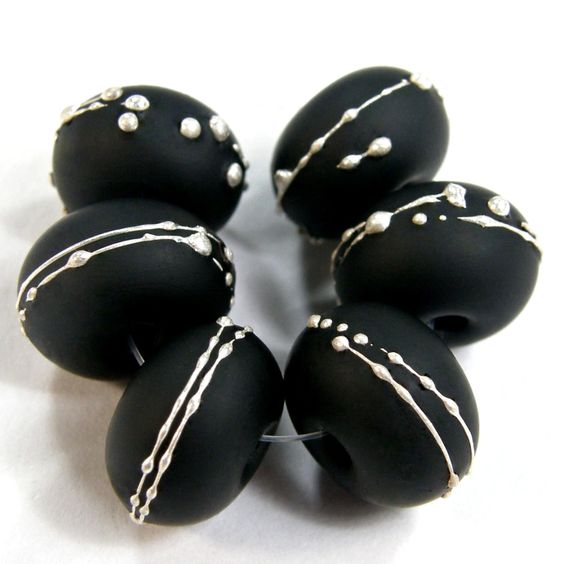

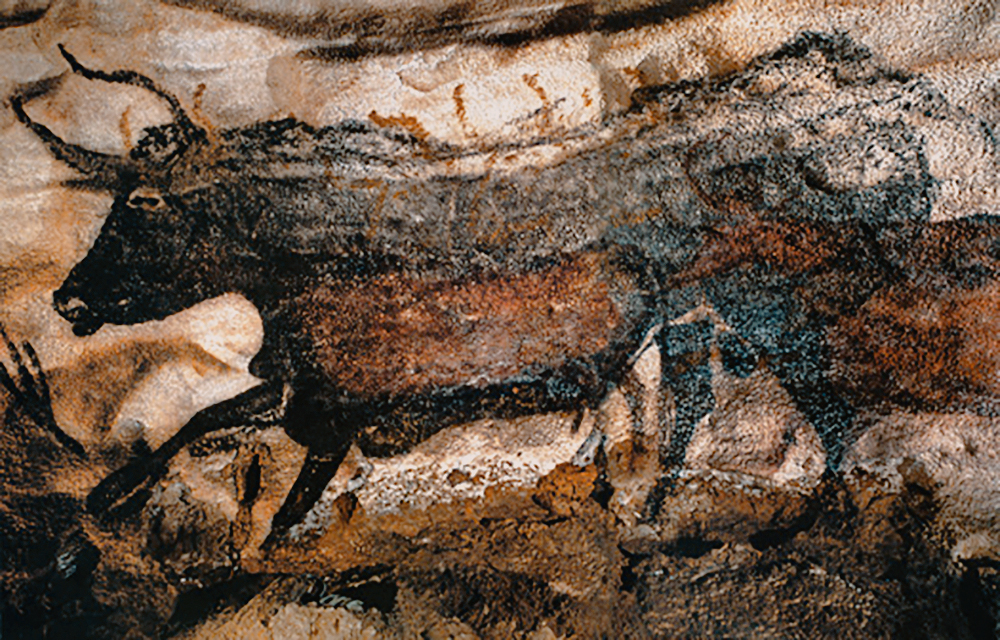
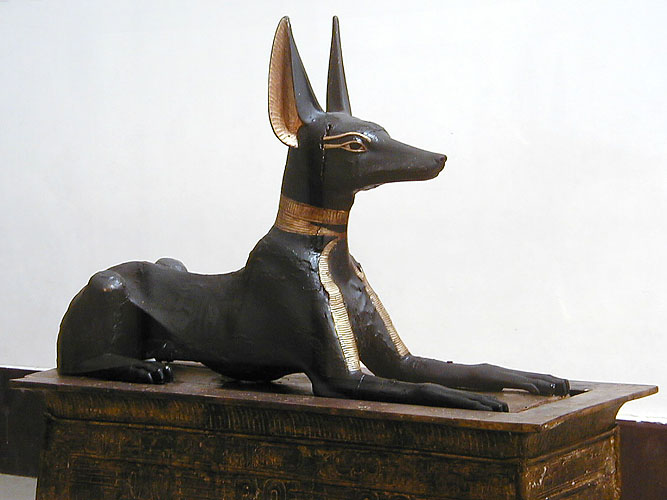
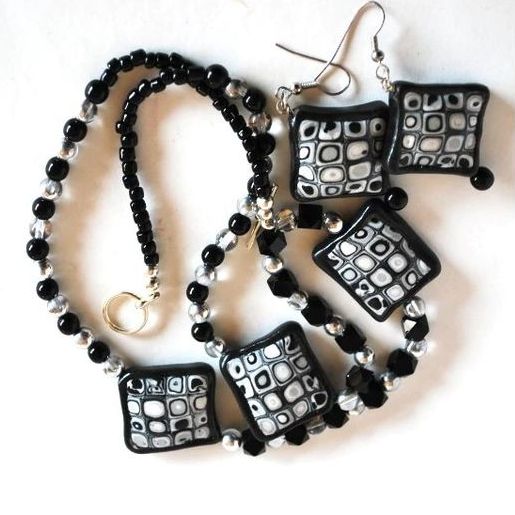
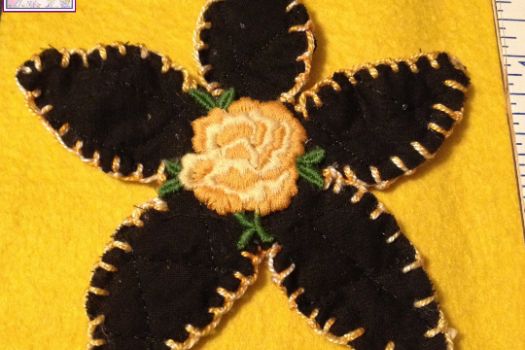
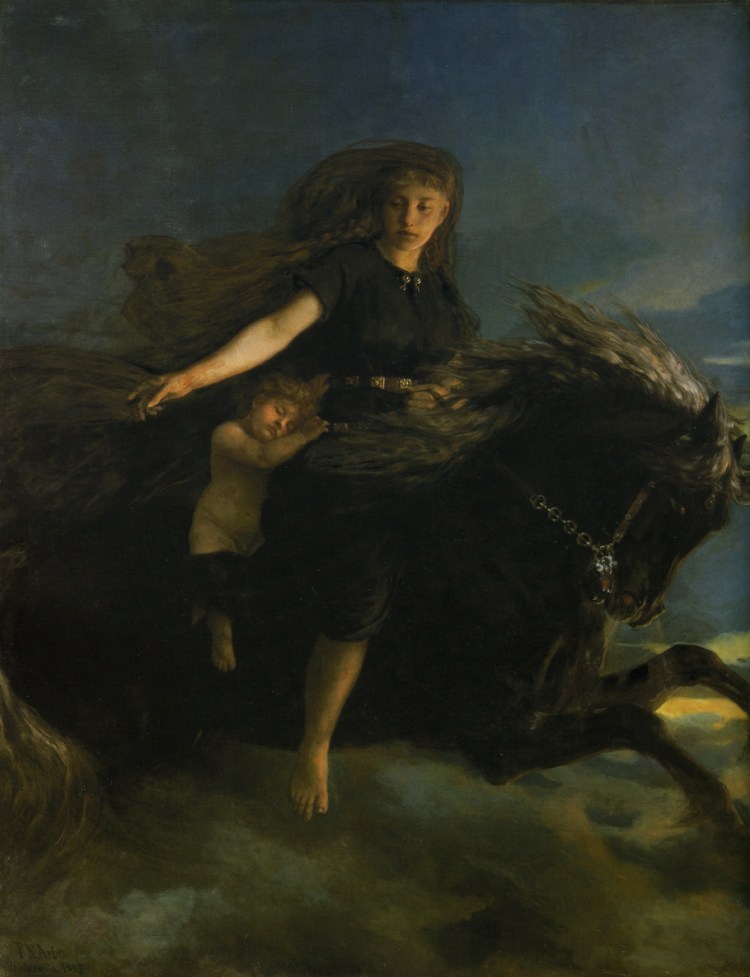

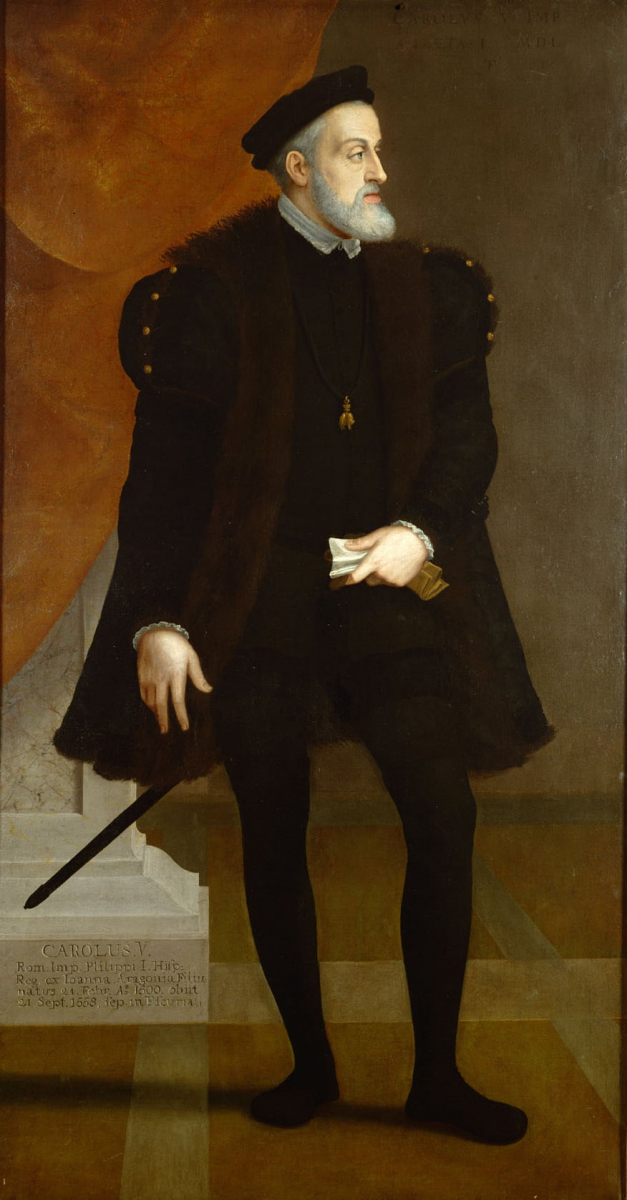
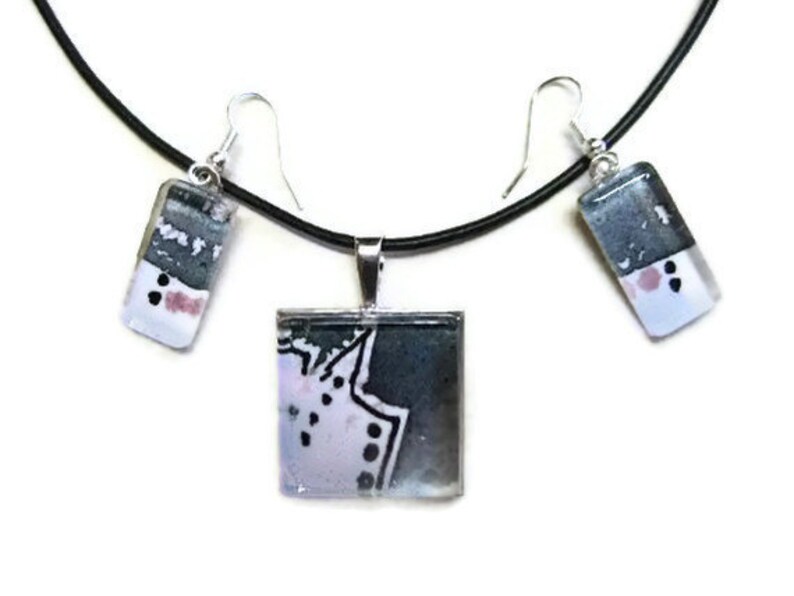

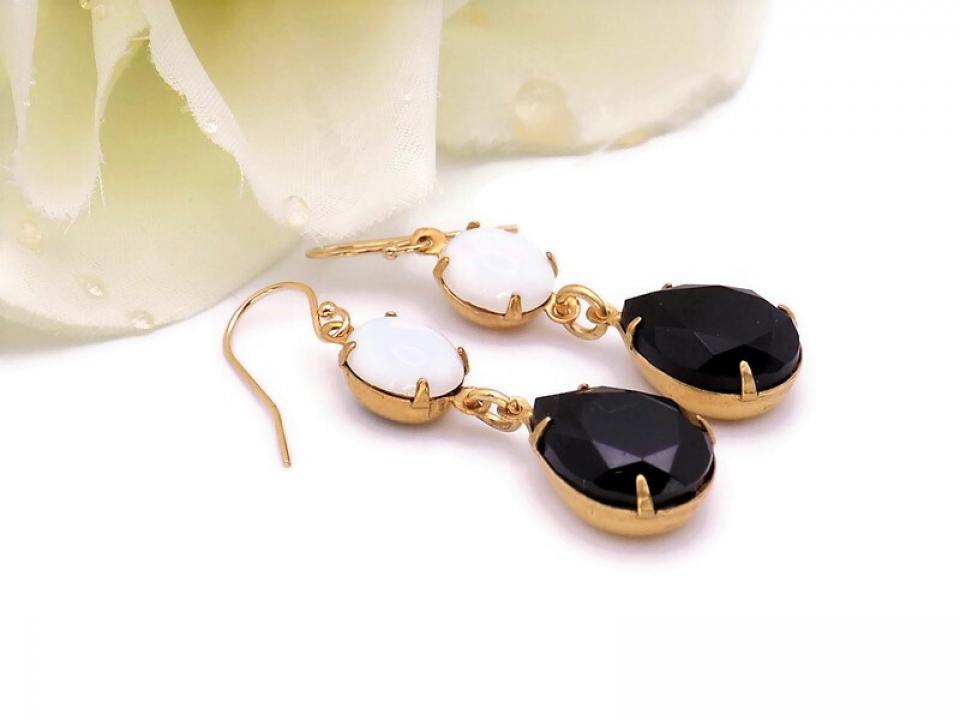
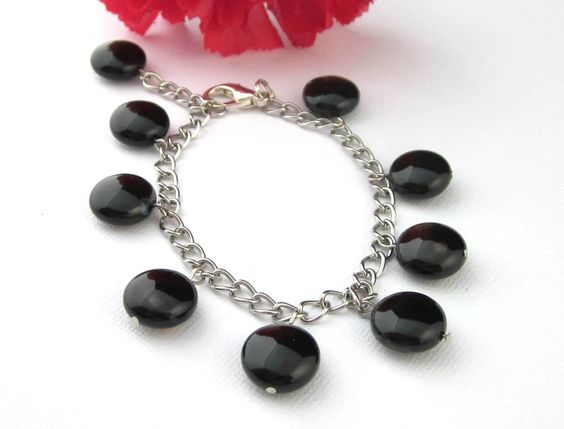


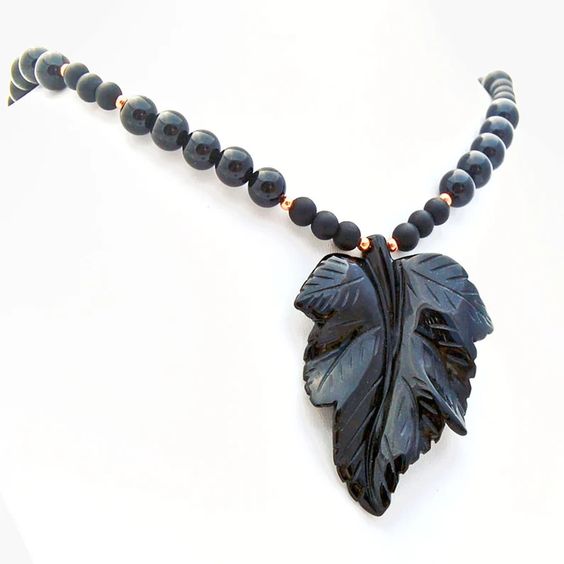
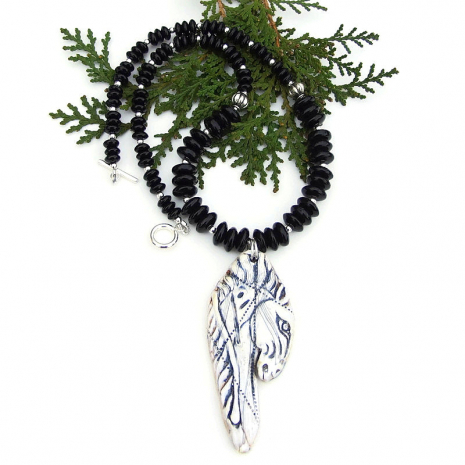






Comments
Thanks
Enjoyed reading this.
Thanks for featured items too.
Tweeted all and the post.
Love Black!
As I sit here in my black shorts and grey t-shirt, I can relate to this post and enjoy the fashion statements that black make. My fav non-color for everything. Fascinating read, especially the crows. Have to just love crows and ravens! Have shared all of these black beauties across the internet. Thank you for including my Klimt style black and white necklace and earring set. Many treats to the desert dog from hurricane harry.
thanks
Thanks for inclusion and a very interesting article @black.
Thanks, Catherine
I enjoyed reading all about black. I instantly got the song in my head, "Black is Black"... I want my baby back by Los Bravos back in the mid 60's. lol Also, "Paint It Black" by The Rolling Stones. Thank you for including my onyx charm bracelet. Sharing!
Thank you
Love reading this as I sit in a black blouse that perfectly coordinates with my denim skirt! Love all the information. Thank you for including our Black Onyx Leaf necklace in this wonderful, enlightening blog.
Thanks so much, Catherine! I
Thanks so much, Catherine! I feel so honored to be a part of this wonderful blog alongside al these remarkable artisans, including yourself! So awesome how you explained the history of the black color along with really interesting pictures. Black is the loveliest color or "non color" there is!
Fascinating Read
Thanks so much, Catherine, for this fascinating and informative blog about black. Never thought about the origins of black dating back so far in time and how many subjects there is surrounding black. Thanks for including my silver wrapped black lampwork beads. Shared on Twitter and Pinterest.
Thank you!
What a great and unique article about Black, Catherine. Interesting to read indeed. I think I have black and grey the most in my wardrobe. In fact, I am wearing black pants now :-) Thank you so much for including my magician tags. Off to share now.
Thanks so much Catherine
Wow Catherine you did it again. A wonderful blog and beautiful beauties to go along with the blog.
Thanks for sharing my black and white earrings. Now my turn to share.
Post new comment